
DESIGN FOR 2017
Author | Promotedesign.it
Via Sansovino, 6 20133, Milan
+39 0236580208
www.promotedesign.it info@promotedesign.it
Graphic Design & Layout | Alice Pirotta
Translation | Valeria Chiodetti, Gloria Gazzoldi
Editing | Grazia Marinelli
Organizational Secretary | Elisa Desanti
Communication Management | Daniela Satta
International Coordination | Gloria Gazzoldi
Editorial Coordination | Barbara Pedone
General Coordination | Enzo Carbone
Logo Fausto Lupetti Editore
Via del Pratello, 31 40122, Bologna
Viale Abruzzi, 84
20131, Milan
www.faustolupettieditore.it
EAN | 9788868741587
Distribution | Messaggerie Libri
Printed in Italy in March 2017
All rights reserved. Total or partial reproduction of this work, in any form or by any means, electronic, mechanical or otherwise, is strictly prohibited without prior permission of the author.
DESIGN FOR
L’iniziativa di Design For, lanciata nel 2012 dal collettivo di designer e architetti Promotedesign.it, è senza dubbio lungimirante: favorire l’incontro tra giovani designer e aziende sensibili al tema dell’innovazione affinché il maggior numero di progetti possa trovare un produttore. Lo strumento è questo libro-catalogo dell’effervescenza creativa, edito ancora una volta da Logo Fausto Lupetti Editore e presentato in concomitanza del Salone del Mobile di Milano, nel quale sono confluite idee selezionate per la loro originalità, per la loro capacità di rispondere a specifiche esigenze del mercato e per la loro convertibilità in prodotto.
Design For 2017 è la sesta edizione di un progetto che sottolinea l’esigenza, anche nell’era della rete, di una forte matrice culturale a ricordare che la modernità viaggia velocemente portandosi con sé un bagaglio pieno di storia e di tradizioni. Una valigia stracolma di esperienze, quelle dei grandi maestri che sempre influenzano e contaminano le pulsioni della nuova leva creativa. La nutrita community “social oriented” di Promotedesign.it trova ancora una volta uno spazio fisico, facendo un balzo fuori dalla rete per popolare le pagine di una ricca e variegata raccolta di prototipi e nuovi progetti in cerca di produttore.
Non mancano anche in questa edizione i contributi speciali di affermate realtà produttive, Alias, Kristalia e Moroso, e le interviste a illustri architetti e designer, è la volta di Lorenzo Damiani, Alessandro Dubini e Odo Fioravanti.
In termini di numeri, dal 2012 ad oggi sono stati oltre
The Design For initiative, launched in 2012 by Promotedesign.it, group of designers and architects, to promote meetings between young designers and companies that are sensitive to the issue of innovation, so that the highest number of projects can find a manufacturer, is undoubtedly far-sighted. The tool is represented by this bookcatalog about creative effervescence, published once again by Logo Fausto Lupetti Editore and presented at the same time as Salone del Mobile in Milan, that brings together ideas selected for their originality, their ability to meet specific market needs and their convertibility into product.
Design For 2017 is the sixth edition of a project that, even in the Internet age, emphasizes the need of a strong cultural matrix to remember that modernity travels rapidly and brings with it a baggage full of history and traditions. A suitcase bulging with experiences, those of the great masters, who always affect and contaminate the impulses of the new creative generations. The large “social oriented” community of Promotedesign.it finds once again a physical space, making a leap out of the network to populate the pages of a rich and varied collection of prototypes and new projects that are looking for a manufacturer.
Also in this edition there are special contributions from established production companies, Alias, Kristalia and Moroso, and interviews with famous architects and designers, such as Lorenzo Damiani, Alessandro Dubini and Odo Fioravanti.
In terms of numbers, since 2012 more than 800
800 i designer coinvolti, 1600 i progetti presentati e più di 20000 le aziende contattate, oltre alla partecipazione di 5000 giornalisti internazionali. Una vetrina eccezionale per i giovani creativi che quest’anno possono concorrere anche all’assegnazione dei Design For Awards, un incentivo per le idee a più alto contenuto di innovazione: i vincitori avranno la possibilità di esporre i propri progetti a Din - Design In, l’evento organizzato da Promotedesign.it in occasione del Fuorisalone 2017 a Milano, nella propulsiva zona Lambrate.
Non resta dunque che fare un benaugurale in bocca al lupo ai giovani creativi e sperare che il maggior numero di idee in erba possa presto incrociare e migliorare le nostre vite.
designers have been involved, 1,600 projects have been presented and more than 20,000 companies have been contacted, in addition to the participation of 5,000 international journalists. An exceptional showcase for young creatives, who this year can also compete for the Design For Awards, an incentive for ideas having the highest level of innovation: the winners will have the opportunity to exhibit their projects at Din - In Design, the event organized by Promotedesign.it during Fuorisalone 2017 in Milan, in the dynamic Lambrate district.
All we have to do is wish good luck to the young creatives and hope that the highest number of budding ideas can soon meet and improve our lives.
DESIGNERS & PRODUCTS
ChairBox è una seduta modulare, progettata per assicurare funzionalità anche in modalità capovolta ottenendo, così, un sistema di seduta componibile. La spalliera estraibile, incastrata sul lato, trasforma il modulo in una sedia.

ChairBox is a modular chair designed to ensure functionality also in the upside down position, thus obtaining a modular seating system. The extractable back, inserted on the side, transforms the module into a chair.



FURNITURE / CHAIR 4MODE CHAIRBOX ITALY / +39 3207560186 - www.4mode.it - info@4mode.it 7
Un’estensione di gamma del design di X.01 per la comodità e semplicità per gli spazi piccoli. Progettato in rovere e costruito a mano, è pensato per la facilità di produzione, spedizione e montaggio. Una piccola panchina per rilassarsi con stile sia a casa che al lavoro.


An extension of the X.01 design range for the convenience and simplicity for small spaces. Designed and hand-built in warm oak, it is intended for ease of production, shipping and assembly. A small bench to relax in style at home or at work.

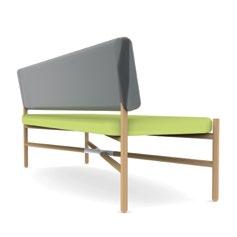
FURNITURE / BENCH
X.02 MEXICO / +521 5515919123 - www.coroflot.com/oscaracosta/profile - oscar.acosta.vid@gmail.com
Oscar Acosta
10
Collaboration with Studio Vrokka (Colombia), designed for Gaia Design
Bloom è un sistema che prevede tre componenti. Nella prima vita, il sistema ruota intorno all’idea di mobili per bambini, scrivania, sedia e sgabello con gradini. Nella seconda vita diventa un vaso, un vaso per funghi e una mangiatoia per uccelli.
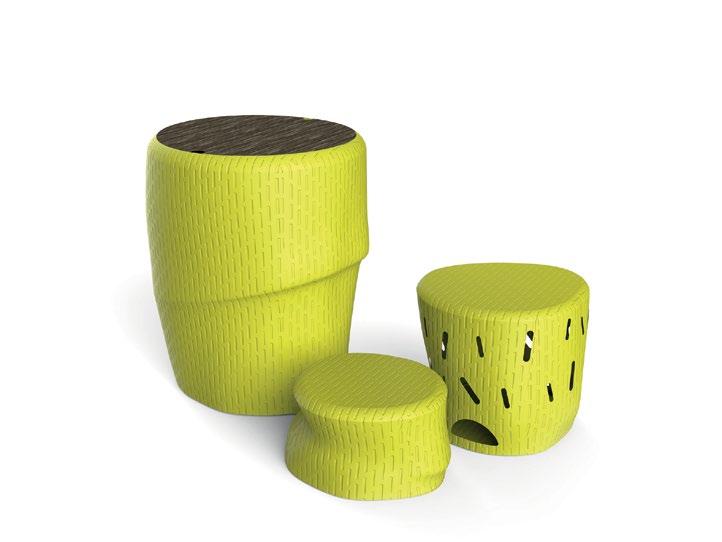

Bloom is a system that involves three components. In the first life, the system revolves around the idea of children’s furniture, desk, chair and stepping stool. In the second life it evolves a plant pot, a mushroom pot and a bird feeder.
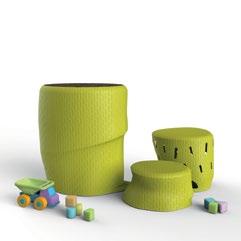
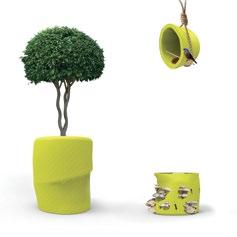
FURNITURE / OTHER Edizalp Akın BLOOM ITALY / +39 3292957946 - www.behance.net/edizalpakin - edizalpakin@gmail.com
11
Collaboration with Plust & Nikita Shukla, Mikaela Silva, Yangyang Chen
Sospesa e leggera come un origami. Spina dorsale del progetto è il grande asse curvo in legno massello, ottenuto dallo studiato incastro di due assi rettilinei. Il risultato per la lampada XJ è solidità, bellezza e zero spreco di materiali.
Suspended and light as an origami. The backbone of the project is the solid wood curved board obtained from the well thought joining of two straight boards. The result for the XJ lamp is solidity, beauty and zero waste materials.
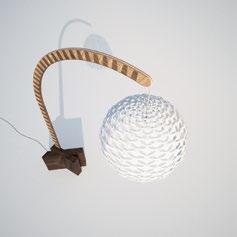

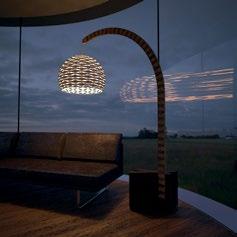
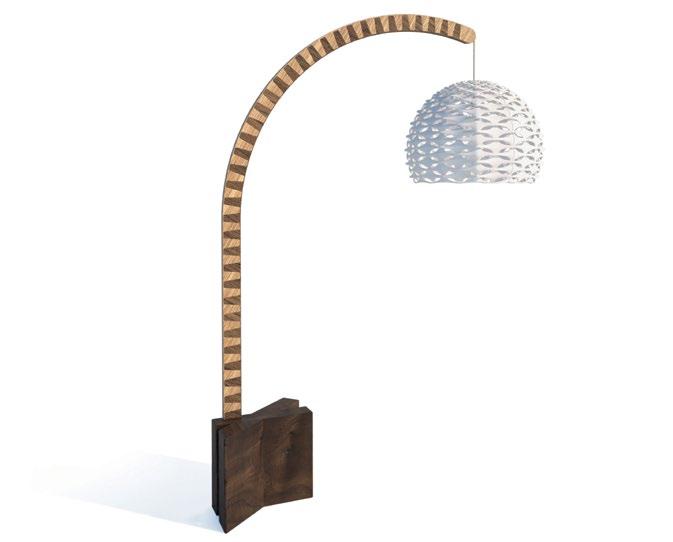
FURNITURE / LIGHTING
XJ ITALY / +39 3403662808 - www.amitrani.com - info@amitrani.com 18
Amitrani
Realizzato con struttura in legno massello e contenitore a due ante, in MDF, laccato, Kinu è un contenitore dalle forme lineari. La grafica è eseguita con stampa digitale, direttamente su MDF. Kinu si pone di integrare Home Design e Street Art.


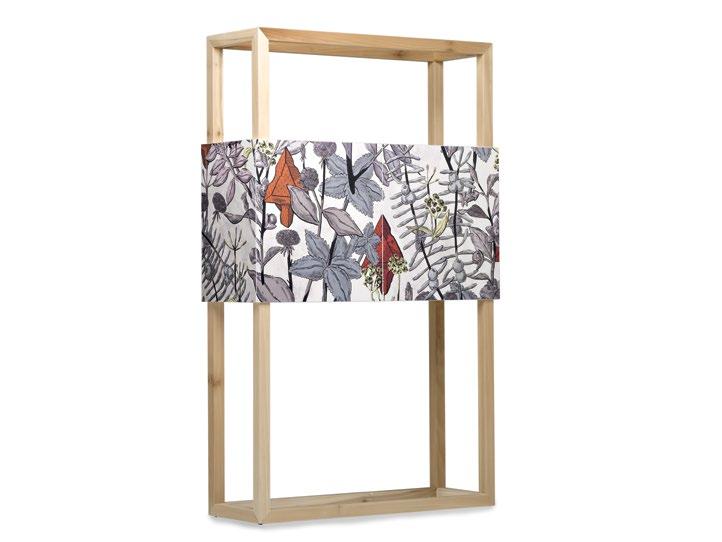
Made of solid wood and with a two-door container, in MDF, lacquered, Kinu is a storage furniture with linear shapes. The graphics is digitally printed directly on MDF. Kinu aims to integrate Home Design and Street Art.
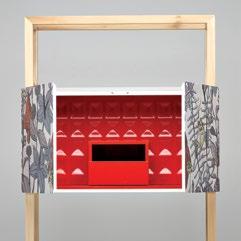
FURNITURE / STORAGE
KINU ITALY / +39 3933371267 - www.facebook.com/artsrl - bandiello@gmail.com, artsrl_@hotmail.com Collaboration with Pastel, street artist / Ph. Flavio&Frank / Rendering Elita Monsellato 19
Paolo Bandiello
Benatti Brothers
Bent è l’immagine concreta di un’illusione ottica: l’attenzione si concentra sul dinamismo e non sulla libreria stessa. Il senso di movimento è dato dall’ordine geometrico. Quando il ritmo si spezza cattura e stupisce lo sguardo.
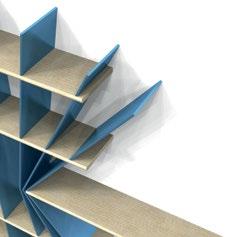


Bent is the concrete image of an optical illusion: the focus is on the dynamism and not on the bookcase itself. The sense of movement comes from the geometrical order; when the rhythm is broken, it captures and astonishes the eye.
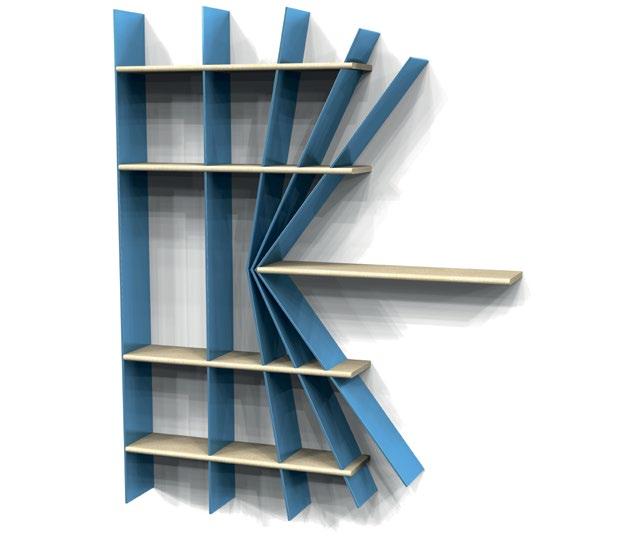
FURNITURE / BOOKCASE
BENT LIBRARY ITALY / +39 3406221627 - www.benattibrothers.com - ivan@benattibrothers.com 20
Semplice, delicata e pulita. La lampada La Carmen diventa un gioco. Scegliere i colori e la quantità di dischi da metterle sopra, una sorta di cappello: uno la copre con discrezione, molti la sovrastano con enfasi.

Simple, delicate and clean. The lamp Carmen becomes a game. You can choose the colors and the amount of discs to put on it, a kind of hat: one covers it with discretion, many dominate it with emphasis.

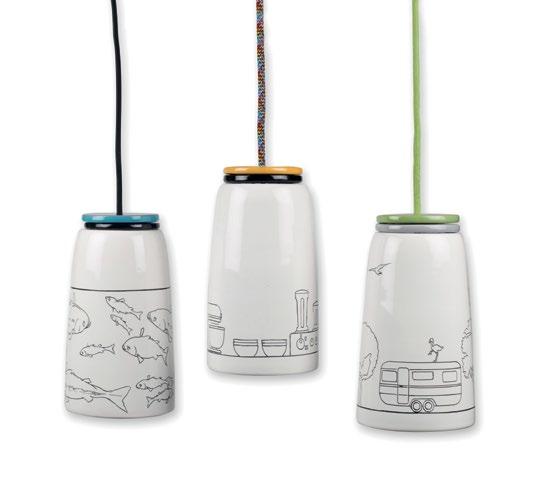

FURNITURE / LIGHTING
LA CARMEN ITALY / +39 3479655653 - www.marabernardi.it - bernardi.mara@gmail.com
Mara Bernardi
21
Manufactured by Carlo Bernat, potter.
Elisa Campana
Avvolgente cuccia con morbidi cuscini (fissati con velcro) unita a palo tiragraffi, ripiani per arrampicate, gioco a molla e portaciotole integrato con ciotole estraibili. Tutto in un solo oggetto! Esiste anche nella versione per cani.
Wraparound cats’s house with soft cushions (secured with Velcro strips) equipped with scratching post, shelves for climbing, spring toy and integrated holder for bowls with extractable bowls. All in just one item! Also available the version for dogs.
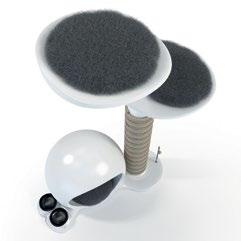

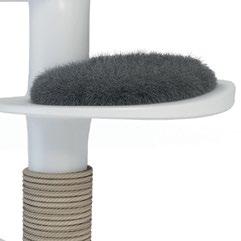

PET / BED
PIKI CAT ITALY / +39 3275997330 - elisa.campana@hotmail.com 30
Armadio dalle linee morbide pensato per i nostri amici a quattro zampe e i loro accessori. Permette di riporre abitini, guinzagli, copertine... in un guardaroba poco ingombrante ma capiente. Munito di due cassetti interni e barra metallica per grucce.


Closet with soft lines designed for our four-legged friends and their accessories. It allows to store clothes, leashes, blankets... in a spacesaving but capacious wardrobe. It is equipped with two internal drawers and a metal bar for hangers.


PET / OTHER
PIKI WARDROBE ITALY / +39 3275997330 - elisa.campana@hotmail.com 31
Elisa Campana
Simone Cappellanti
Una spirale di luce che si arrotola restringendosi verso l’alto, illuminando a 360°. Vestita di pop e minimalismo, contemporaneità e industrial shock, nasce per stare al centro dell’attenzione nella sua complessa semplicità.

A spiral of light that rolls upwards while narrowing, illuminating at 360°. Dressed in pop and minimalism, contemporaneity and industrial shock, it has been created to be the focus of attention in its complex simplicity.


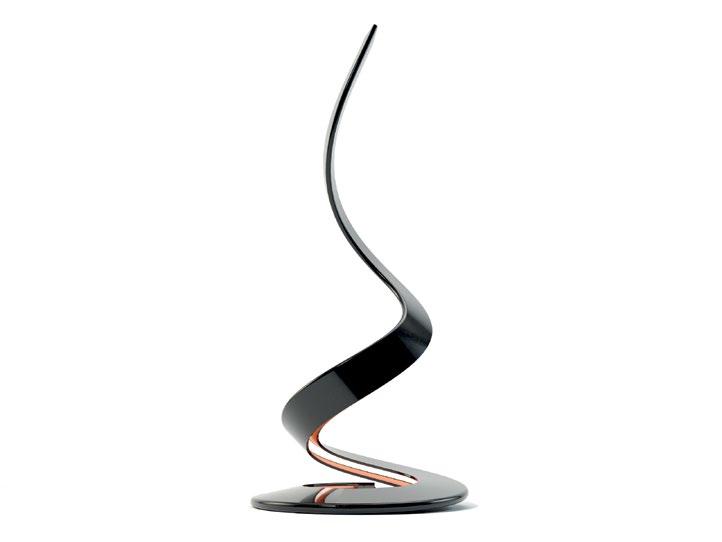
FURNITURE / LIGHTING
PYTHON ITALY / +39 065294453 - www.cappellanti.com - studio@cappellanti.com 32
Liberamente ispirata alla pianta acquatica, definisce l’icona contemporanea delle poltrone. Elegante e, nel contempo, iconica e rassicurante, interpreta pienamente quegli aspetti filologici di eleganza, beltà e fluente portamento.
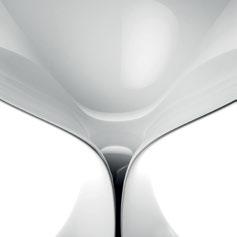
Freely inspired by the aquatic plant, it defines the contemporary icon of the armchairs. Elegant and at the same time iconic and reassuring, it fully interprets the philological aspects of elegance, beauty and fluent posture.

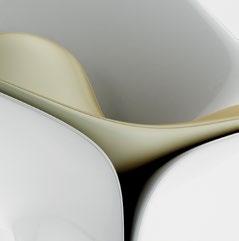

FURNITURE / ARMCHAIR
CALLA ITALY / +39 065294453 - www.cappellanti.com - studio@cappellanti.com 33
Simone Cappellanti
ALIAS

34
SECONDA / Mario Botta
Leggerezza tecnologica, trasversalità, innovazione sono dal 1979 i valori chiave di Alias, storico marchio del design Made in Italy. Valori dai quali prende avvio il forte legame dell’azienda con designer affermati, attraverso i quali Alias ha saputo far emergere la peculiarità di ciascun progettista, in uno scambio continuo di stimoli e idee e con una costante apertura all’utilizzo inedito dei materiali e alla sperimentazione delle tecnologie. Il successo internazionale del marchio si fonda sul lavoro svolto nello sviluppo di ricerca creativa e qualità di prodotto, solida capacità produttiva e grande esperienza distributiva.
Alias viene fondata nel 1979 da Carlo e Francesco Forcolini, Enrico Baleri, che si occupava della vendita d’arredo d’avanguardia, e Marilisa Decimo. I primi prodotti sono la serie broomstick, pensata da Magistretti, e la spaghetti chair di Giandomenico Belotti, diventata in seguito un must del design italiano. La presentazione al pubblico di Alias avviene nella galleria Gio Marconi, per sottolineare l’intreccio tra cultura e impresa: tra i cretti di Burri, le ceramiche di Fontana e gli amichevoli consigli di Emilio Tadini, Alias nasce e debutta respirando arte, cultura, e mondanità. In Alias vengono coinvolti progettisti molto giovani e allora poco conosciuti come Mario Botta, che progetta la sedia seconda nel 1982. Nel 1983 Enrico e Marilisa Baleri lasciano Alias. Alias costruisce la propria identità puntando su alcuni designer; oltre Belotti, Forcolini e Mario Botta, viene coinvolto Alberto Meda, che nel 1987 presenta light light, sedia in fibra di carbonio, prodotto in serie limitata che sarà il precursore della frame, collezione di sedute in alluminio che
Since 1979 technological lightness, transversality and innovation have been the key values of Alias, an historical brand of Italian design. It is from these values that the strong bond between the company and established designers derives; from each designer Alias has been able to bring out their peculiarities, in a continuous exchange of incentives and ideas, constantly open to unprecedented uses of materials and to technology tests. The international success of the brand is based on the work done to develop creative research and product quality, strong production capacity and large distribution experience.
Alias was founded in 1979 by Carlo and Francesco Forcolini, Enrico Baleri, who was responsible for the sales of cutting-edge furniture, and Marilisa Decimo. The first products were the broomstick series, designed by Magistretti, and the spaghetti chair by Giandomenico Belotti, which later became a must of Italian design. Alias public presentation took place in the Giò Marconi gallery, to emphasize the link between culture and business: among the “Cretti” by Burri, the ceramics by Fontana and Emilio Tadini’s friendly advice, Alias was born and made its debut, while breathing art, culture, and high society. Alias engaged very young designers, who at the time were little known, as Mario Botta, who designed the seconda chair in 1982. In 1983 Enrico and Marilisa Baleri left Alias. Alias built its identity focusing on some designers; in addition to Belotti, Forcolini and Mario Botta, Alberto Meda was involved. In 1987 he presented light light, a carbon fiber chair, produced in limited series, the forerunner of frame, a collection of aluminum seats that will influence
Company Profile 35
determina la crescita dell’azienda. Sono quattro designer che hanno culture, stili, linguaggi diversi. Il punto comune è la qualità della ricerca. Alla fine degli anni Ottanta, Artemide, a cui fa capo Ernesto Gismondi, acquisisce Alias che, a sua volta, assorbe lo storico marchio Danese. In questi anni fino al 1993 il ruolo di art director è ricoperto da Carlotta de Bevilacqua. Nel 1994 l’Architetto svizzero Renato Stauffacher viene nominato Amministratore Delegato ed insieme a Rino Fratus, imprenditore bergamasco, contribuiscono all’affermarsi del marchio in Italia e sulla scena internazionale. Alias esplora il mondo della casa e dell’ufficio con le collezioni young lady/ treetable di Paolo Rizzatto, atlas di Jasper Morrison e sec, un sistema modulare a componibilità infinita disegnato da Alfredo Häberli. Nel 1996 arriva la sedia laleggera di Riccardo Blumer che segna un

the growth of the company. Four designers with different cultures, styles and languages. What they have in common is the research quality. In the late eighties, Artemide, owned by Ernesto Gismondi, acquired Alias that, in turn, absorbed the historic Danese brand. In these years until 1993, the art director was Carlotta de Bevilacqua. In 1994 the Swiss architect Renato Stauffacher was appointed CEO and together with Rino Fratus, a businessman from Bergamo, contributed to the brand success in Italy and on the international scene. Alias explores the home and office world with the collections young lady/treetable by Paolo Rizzatto, atlas by Jasper Morrison and sec, a modular system that can be arranged in infinite ways designed by Alfredo Häberli. In 1996 the laleggera chair by Riccardo Blumer marked another step forward in
 LALEGGERA / Riccardo Blumer
LALEGGERA / Riccardo Blumer
36
SPAGHETTI / Giandomenico Belotti
ulteriore passo avanti nella ricerca e vince il Design
Preis Schweiz nel 1997 ed il compasso d’oro ADI nel 1998. In questi anni la presenza ai saloni del mobile contribuisce al successo internazionale, e l’azienda spicca sempre con allestimenti particolarmente astratti e suggestivi. Il decennio si apre con l’imbottito flexus di Paolo Rizzatto. Nel 2001 Alias viene acquistata da Cassina. Sono anni in cui si sviluppano altri prodotti di grande successo, come le sedute da ufficio rollingframe/meetingframe e il tavolo frametable di Alberto Meda, segesta e taormina di Alfredo Häberli, il mobile contenitore layout di Michele De Lucchi. Nel 2007 Alias entra nel Poltrona Frau Group, gruppo leader internazionale nel settore dell’arredamento di alta gamma. Vengono presentate le collezioni outdoor, in particolare, open system di James Irvine, il sistema di imbottiti
the research and was awarded the Design Preis Schweiz in 1997 and the Compasso d’Oro ADI in 1998. In those years the participation in Furniture shows contributed to the international success, and the company always stood out thanks to particularly abstract and suggestive set-ups. The decade began with the padded flexus by Paolo Rizzatto. In 2001 Alias was bought by Cassina. In those years other very successful products were developed, such as the rollingframe/meetingframe office chairs and the frametable table by Alberto Meda, segesta and taormina by Alfredo Häberli, the layout storage system by Michele De Lucchi. In 2007 Alias entered the Poltrona Frau Group, international leader in the high-end furniture industry. The outdoor collections were presented, in particular, open system by James Irvine, the dehors upholstered system by Michele De

 HIGHFRAME / Alberto Meda
HIGHFRAME / Alberto Meda
37
KOBI / Patrick Norguet
dehors di Michele De Lucchi e la collezione teak disegnata da Alberto Meda (Compasso d’Oro ADI 2012). Nel 2008 viene inaugurato il primo flagship store Alias a Milano, in corso Monforte 19, progetto di Stauffacher e Sanguineti. In questi anni continua la collaborazione con Alberto Meda, che disegna per il brand la collezione di tavoli biplane, e con Michele De Lucchi la cui sedia Norma segna una svolta nel design delle sedute da ufficio. L’ Architetto Renato Stauffacher difende l’identità del marchio con lo stesso spirito di provocazione che ha fatto nascere Alias, promuovendo progetti tra arte e design come MezzoTerra MezzoMare con Michelangelo Pistoletto. Il 2010 è segnato dalla riacquisizione della maggioranza del marchio da parte di Renato Stauffacher e Andrea Sanguineti, brand manager di Alias. Dal 2011 Alias torna al Salone del Mobile, con un allestimento omaggio alla spaghetti, progettato da Stauffacher – Sanguineti (Menzione d’onore - Compasso d’Oro ADI 2014) e presentando diverse collezioni disegnate da designer consolidati come Alberto Meda (hydrochair), Jasper Morrison (tagliatelle) e Alfredo Häberli (tavolo TEC), accanto a new entry quali Eugeni Quitllet e Philippe Starck (appendiabiti to’taime), e PearsonLloyd (imbottiti eleven). Gli anni a seguire sono costellati da nuove collaborazioni, che conducono alla nascita di nuovi prodotti. Solo per citarne alcuni: la seduta elle (Menzione d’onore - Compasso d’Oro ADI -2014) di Eugeni Quitllet; la collezione di sedute kobi, e kayak (RED DOT Award 2016) del designer francese Patrick Norguet e la libreria aline di Dante Bonuccelli. Il 2015 vede l’ingresso in Alias di Beat Zaugg, imprenditore con grande passione e visioni per sport, arredamento, design ed architettura. Il primo segno forte della
Lucchi and the teak collection designed by Alberto Meda (Compasso d’Oro ADI 2012). In 2008 the first Alias flagship store was inaugurated in Milan, Corso Monforte 19, designed by Stauffacher and Sanguineti. During those years the collaboration with Alberto Meda continued, he designed the biplane table collection, and also with Michele De Lucchi, whose Norma chair marked a turning point in the design of office chairs. The architect Renato Stauffacher defended the identity of the brand with the same spirit of provocation that gave birth to Alias, promoting projects between art and design, such as MezzoTerra Mezzomare with Michelangelo Pistoletto. 2010 is remembered for the re-acquisition of the majority of the brand by Renato Satuffacher and Andrea Sanguineti, brand manager at Alias. Since 2011 Alias has been back to the Salone del Mobile, with a set-up that is a tribute to spaghetti, designed by Stauffacher – Sanguineti (Honorable Mention - Compasso d’Oro ADI 2014), presenting various collections designed by well-established designers, such as Alberto Meda (hydrochair), Jasper Morrison (tagliatelle) and Alfredo Häberli ( TEC table), next to new entries, such as Eugeni Quitllet and Philippe Starck ( to’taime coat stand), and PearsonLloyd ( eleven upholstered system). The following years are full of new collaborations, leading to the creation of new products. To name a few: the elle chair (Honorable Mention - Compasso d’Oro ADI -2014) by Eugeni Quitllet; the kobi and kayak seat collection (RED DOT Award 2016) by the French designer Patrick Norguet and the aline bookcase by Dante Bonuccelli. In 2015 Beat Zaugg, an entrepreneur with great passion and vision for sports, decoration, design and architecture, entered
38
nuova strategia è il nuovo stand, progettato da Stauffacher e Sanguineti; un’architettura complessa e riutilizzabile, a sottolineare l’idea del design di Alias legata alla tecnologia, sostenibilità e durata nel tempo. In questo contesto sono stati presentati i tavoli saen di Gabriele ed Oscar Buratti, le sedute twig di Nendo (RED DOT Award 2016), frame soft di Alberto Meda, i divani con pannelli laterali eleven highback di PearsonLloyd. Protagonisti al Salone del Mobile di Milano 2016 la poltrona e pouf gran kobi di Patrick Norguet; il sistema di imbottiti twelve di PearsonLloyd; e “ tavolo zero” del designer israeliano Ron Gilad. Sotto la direzione prodotto di Stauffacher e Sanguineti, la strategia del catalogo Alias si espande ulteriormente, focalizzandosi sull’ambito contract. Alias partecipa per la prima volta ad Orgatec 2016 invitando ad esplorare e a conoscere i prodotti ufficio all’interno di un percorso espositivo articolato in diverse aree, che rappresentano gli spazi del lavoro contemporaneo, caratterizzati sempre più da un’organizzazione fluida e dinamica. Vengono presentate le collezioni di sedute certificate slim del duo britannico PearsonLloyd, frame 52 di Alberto Meda; il sistema di imbottiti okome dello studio Nendo. Dopo 35 anni di intenso lavoro che l’hanno visto affrontare con impegno e dedizione le diverse epoche dell’azienda, l’Architetto Renato Stauffacher lascia Alias. Beat Zaugg, nuovo Amministratore Delegato, in stretta collaborazione con l’architetto Andrea Sanguineti, guiderà nei prossimi anni l’iconico marchio del design Made in Italy, mantenendo una continuità con il territorio, la storia, l’identità, i valori del brand e, nello stesso tempo, attuerà precise strategie di sviluppo in termini di internazionalizzazione e ricerca prodotto.
Alias. The first strong sign of the new strategy is the new stand, designed by Stauffacher and Sanguineti; a complex and reusable architecture to emphasize the Alias idea of design linked to technology, sustainability and durability. In this context the new saen tables by Gabriele and Oscar Buratti were presented, in addition to the twig chairs by Nendo (RED DOT Award 2016), frame soft by Alberto Meda, the eleven highback sofas with side panels by PearsonLloyd. Stars of the Salone del Mobile in Milan 2016, the gran kobi armchair and pouf by Patrick Norguet; the twelve upholstered system by PearsonLloyd; and “ tavolo zero” by the Israeli designer Ron Gilad. Under the product management of Stauffacher and Sanguineti, the Alias catalog strategy expanded further, focusing on the contract sector. Alias participates for the first time in Orgatec 2016, inviting to explore and get to know office products within an exhibition path divided into several areas, representing the contemporary work spaces characterized by an increasingly fluid and dynamic organization. They presented the slim certified chair collections by the British PearsonLloyd duo, frame 52 by Alberto Meda; the okome upholstered system by Studio Nendo. After 35 years of hard work during which he faced the different eras of the company with commitment and dedication, the architect Renato Stauffacher left Alias. Beat Zaugg, the new CEO, in close collaboration with architect Andrea Sanguineti, will lead in the coming years the iconic design brand Made in Italy, maintaining continuity with territory, history, identity, brand values and, at the same time, implementing precise development strategies in terms of internationalization and product research.
ALIAS SPA
39
Via delle Marine 5 - 24064 Grumello del Monte (Bergamo), Italy alias.design
Gabriele Cappelletti
Dama prende chiaramente ispirazione dalla silhouette di una donna in movimento che, con le diverse inclinazioni del suo cappello a tesa larga, permette di modulare la quantità di luce emanata nell’ambiente in cui si trova.
Dama clearly takes inspiration from the silhouette of a moving woman, who with the different inclinations of her wide-brimmed hat allows to modulate the amount of light emanated in the environment where it is located.




FURNITURE / LIGHTING
DAMA ITALY / +39 3287981403 - www.cappellettiarchitetti.com - gabriele@cappellettiarchitetti.com 40
Costituita da elementi modulari laccati o rivestiti in tessuti colorati, Lega arreda e personalizza l’ambiente in cui è inserita anche grazie al particolare sistema di contenimento ad elastico. Semplicità e funzionalità giocano insieme ottenendo un elemento di forte personalità.

Made of modular elements, which are lacquered, coated or covered with colorful fabrics, Lega furnishes and personalizes the environment in which it is inserted, thanks also to the elastic containment system. Simplicity and functionality play together to obtain a strong personality element.


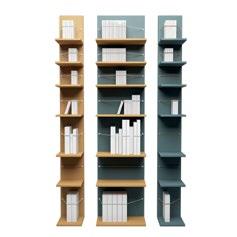
FURNITURE / BOOKCASE Gabriele Cappelletti LEGA ITALY / +39 3287981403 - www.cappellettiarchitetti.com - gabriele@cappellettiarchitetti.com 41
SERIE ELEMENTS
Luisa Cappelli
Serie di contenitori in silicone rappresentanti i quattro elementi naturali. Il silicone, date le sue caratteristiche di durata e resistenza, permette che vengano utilizzati sia come sottopentola o come contenitori per alimenti.
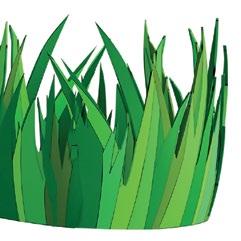

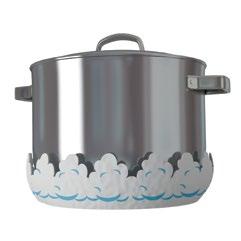
The collection Elements is a set of silicone containers representing the four natural elements. Given the high durability and strength of silicone, they can be used both as trivets and as food containers.

FOOD / KITCHEN ACCESSORIES
ITALY / +39 3283217334 - luisa.cappelli@yahoo.it 44
Contenitori per alimenti in ceramica smaltata dalla forma ibrida di un pinguino, sembrano stare in equilibrio precario sulla tavola quasi a ricordare la camminata goffa e impacciata del simpatico animale.
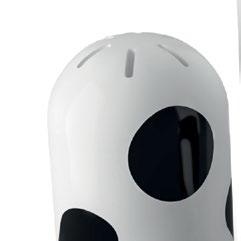

S.O.P. (Salt, Oil and Pepper) are enameled ceramic food containers with the hybrid form of a penguin, that seem to be precariously balanced on the table as if to remind us of the clumsy and awkward walk of this cute animal.


FOOD / KITCHEN ACCESSORIES
S.O.P. (SALE OLIO E PEPE) ITALY / +39 3283217334 - luisa.cappelli@yahoo.it 45
Luisa Cappelli
Arctic è realizzato con strisce di metallo: grazie alle onde “dinamiche” il tavolo fermo sembra muoversi. Le strisce e i telai di supporto possono essere utilizzati come porta-CD agli angoli, mentre le “onde” possono essere usate come portariviste.
Arctic is made by metal strips with the “dynamic” waves which make the still table seems to be moving. The strips and supporting frames can be used as CD stands on the corners. Besides, the “waves£ can be used as magazine stands.




FURNITURE / COFFEE TABLE
ARCTIC HONG KONG, UK / +852 63301863, +44 (0)7921076100 - www.waihocheung.wix.com/waihocheung - waiho_hunter@hotmail.com 46
Wai Ho Cheung
Gravity è ispirato dal basamento per piante a piedistallo. Una piramide esagonale capovolta sulla parte superiore viene sostenuta da cavi con una griglia sottostante, formando una sorta di dilatazione del tempo gravitazionale. La griglia può essere utilizzata come piccolo contenitore.
The Gravity inspired by pedestal plant stand. An up-side-down hexagonal pyramid on the top held by wires with a grid underneath, forming a scene of gravitational time dilation. Users can use the grid as small storage space.


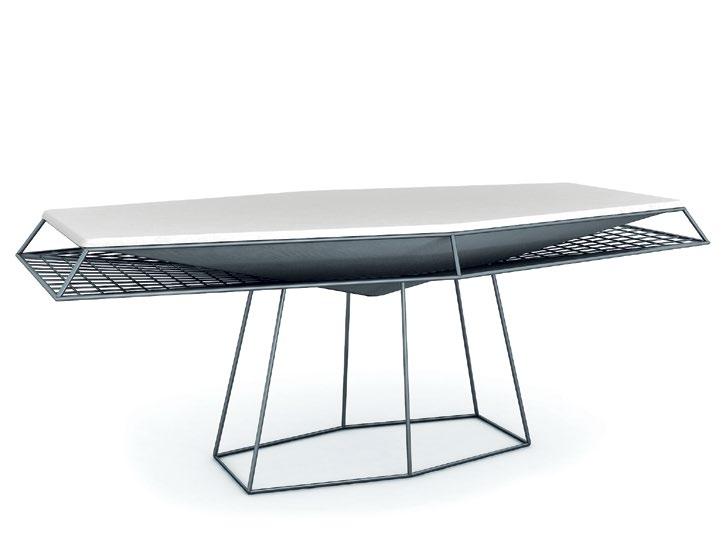
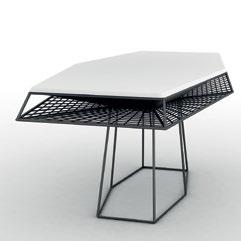
FURNITURE / TABLE Wai Ho Cheung GRAVITY HONG KONG, UK / +852 63301863, +44 (0)7921076100 - www.waihocheung.wix.com/waihocheung - waiho_hunter@hotmail.com 47
Paolo Cicogna
Il tavolo presenta una solida struttura portante in legno sagomata secondo un gioco geometrico ottenuto con due figure composte da elementi a sezione romboidale. Il piano in cristallo ne esalta purezza formale e valore scultoreo.
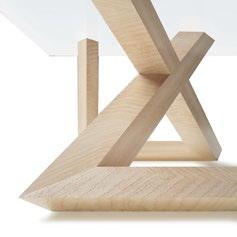
The table has a solid supporting wooden structure shaped according to a geometric pattern obtained with two figures composed by diamond shaped elements. The glass top enhances the formal purity and the sculptural value.
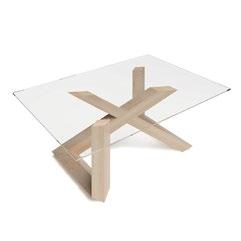


FURNITURE / TABLE
LIXX ITALY / +39 3393754614 - www.cicognadesign.com - alessio@cicognadesign.com
48
Collaboration with Alessio Cicogna - engineer&project manager, Roberto Tardocchi - architect&graphic designer
Una superficie rigata sospesa, sostenuta da tre fili di acciaio, occupa uno spazio quadrato in proiezione ma che spazialmente forma una superficie sghemba che sostiene una pioggia di lampadine alimentate da una piramide di cavi.
The lamp Slant has a suspended grooved surface, which is supported by three steel wires, that occupies a square space in projection, but spatially forms a skew surface supporting a hail of bulbs powered by a pyramid of cables.



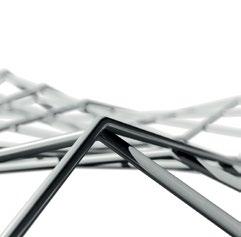
FURNITURE / LIGHTING Paolo Cicogna SLANT ITALY / +39 3393754614 - www.cicognadesign.com - alessio@cicognadesign.com
49
Collaboration with Alessio Cicogna - engineer&project manager, Roberto Tardocchi - architect&graphic designer
Dipl. Arch. Denise da Cruz Campitelli GREEN LIGHT
Lampada con generatore autarchico in rame, terriccio e piastra acrilica simulante un paralume, illuminato da una stringa di LED alimentati da un booster, che aumenta il valore di tensione generata dai batteri del terriccio.


Table lamp with self-sufficient energy generator, made of copper and soil and acrylic plate simulating a lampshade, illuminated by a LED string powered by a booster, which increases the voltage value generated by the soil bacteria.
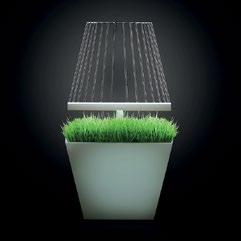

FURNITURE / LIGHTING
LIECHTENSTEIN
/ +423 7914091 - www.dacruz.li, www.greentime.li - denise@adon.li
56
Collaboration with Gemeinde Mauren, Gärtnerei Müko Mauren, Schreinerei Jürgen Konrad-Vaduz, Spenglerei Biedermann-Vaduz, Greentime
TriP si fa notare grazie al fatto di rendere l’utente protagonista dandogli piena possibilità di personalizzazione cromatica e materica di ogni singolo elemento, così da rendere la cappa un proprio pezzo di design.

The kitchen hood TriP stands out because it makes the user a player. This product allows a complete customization in terms of colors and materials of each element, thus making the hood one’s own piece of design.



FOOD / KITCHEN ACCESSORIES Elia Dal Magro TRIP ITALY / +39 3349589363 - dalmagroelia@gmail.com 57
Funzionalità e spazio caratterizzano il progetto. Il top del tavolino, dividendosi in due parti, raddoppia la superficie. L’elemento chiave del complemento d’arredo è la linguetta in legno che passa all’ interno della gamba.
The project is characterized by functionality and space. The table top, when it is split in two parts, doubles the surface. The key element of the coffee table Space is the wooden tab passing inside the leg.




FURNITURE / COFFEE TABLE
SPAZIO ITALY / +39 3290045546 60
Luca De Lorenzo
Un angolo curvo rende questa sedia, altrimenti minimale, molto speciale. Aggiunge uno scopo, mentre funge da appendiabiti. Per rendere questa caratteristica ancora più dominante, le superfici curve sono evidenziate in un colore diverso.
One bending corner makes this otherwise minimal chair very special. It adds purpose while functioning as a coat hanger. To make this feature even more dominant, the bent surfaces are highlighted in a different colour.

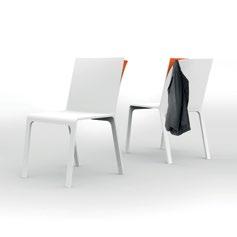

Design With A Story

CHAIR
FURNITURE /
BENT CHAIR GERMANY / +49 17685650525 - www.designwithastory.net - info@designwithastory.net More info on www.designwithastory.net/bent-chair 61
Design With A Story

Oggi il mondo cambia a un ritmo mai visto prima. Lavoro e tempo libero si dissolvono, il tempo diventa un lusso. L’orologio ricorda che i momenti sono importanti. Il vetro smerigliato mostra appena l’ora dimostrando che le persone si rilassano di più quando non sanno che ore sono.

Todays world is changing at a pace never seen before. Work and free time are dissolving, time is becoming luxury. This clock reminds us that moments matter. An area of frosted glass barely displays the time to show people that they can relax best when they are unaware of time.


FURNITURE / CLOCK
RELAX CLOCK GERMANY / +49 17685650525 - www.designwithastory.net - info@designwithastory.net More info on www.designwithastory.net/relax-i 62
Il progetto di questo lavabo è quello di assolvere ad una delle esigenze più importante dell’ambiente bagno; il dover collocare oggetti ingombranti come asciugamani e salviette. Il profilo lo caratterizza suggerendo in modo incisivo il suo preciso utilizzo.



This washbasin is designed to meet one of the most important needs in a bathroom: the arrangement of cumbersome items, such as bath and hand towels. It is characterized by its profile that effectively suggests its precise use.

FURNITURE / BATHROOM FURNITURE
Emili PARENTESI ITALY / +39 3332021291 - emili_roberta@libero.it 63
Roberta
Ilias Fragkakis
Rettangolare o quadrato? Circolare o ovale? Due cerchi si uniscono per dare forma ad un singolo tavolo. Con un diverso approccio al design per un uso flessibile: da una cena per due ad una grande celebrazione. Un complemento d’arredo per ogni occasione.


Rectangular or square? Circular or oval? Two circles are joined to give shape to a single table. With a new design approach for flexible use: from a dinner for two, to a big celebration. A piece of furniture for all occasions.
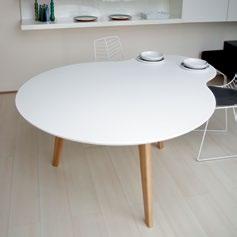

FURNITURE / TABLE
UNION ITALY / www.fragkakisilias.com - ilias.fragkakis@gmail.com 70
Immaginazione in cucina! Un porta posate a forma di nuvola ed un piccolo contenitore come un giardino recintato per raccogliere l’acqua in eccesso, per poggiare il detersivo e la spugna o, ancora meglio, per innaffiare le tue piccole piante!
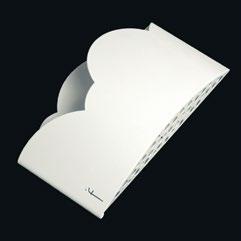
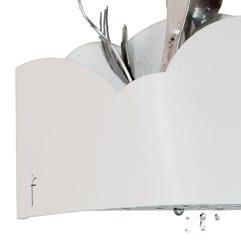
Imagination in the kitchen! A cloud shaped cutlery drainer and a small container like a fenced garden to collect the excess water, to place the detergent and a sponge or, best of all, to water your small plants!

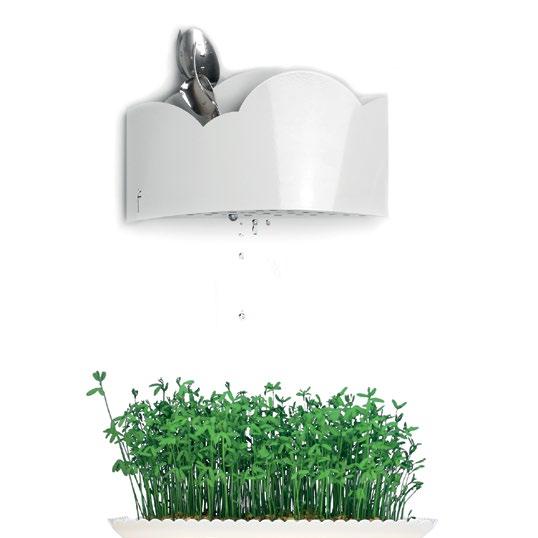
FOOD / KITCHEN ACCESSORIES
RAIN CLOUD ITALY / www.fragkakisilias.com - ilias.fragkakis@gmail.com 71
Ilias Fragkakis

KRISTALIA 1085 EDITION / Bartoli Design - Productive Process 74
Matisse, che la sapeva lunga di vita, gioia e bellezza, ha detto una volta “il jazz è ritmo e significato”. Il design, potremmo dire oggi, è quel significato a cui è stato dato un ritmo. Una sedia è una sedia, ma una sedia di design suona una musica diversa. Perciò la storia di Kristalia comincia sempre da questa nota: il jazz. Significato che è: innovazione, funzionalità, artigianato, Made in Italy, sostenibilità, trasparenza. Ritmo che è: design. Quella cosa che, come il jazz, se provi a spiegarla, non la capirai mai.
Kristalia nasce nel 1994 per volontà di un gruppo giovane di friulani appassionati di jazz, che fanno la cosa più intelligente ma anche più facile e immediata che si può fare: guardano intorno a sé, in quel nord est dove sorgerà l’azienda, scoprono settori completamente nuovi per il design, ma in cui si esprimono eccellenze del posto: gli scarponi da montagna, la produzione di componenti automobilistiche, l’abbigliamento e la maglieria. E in questi luoghi decidono di imprimere un ritmo nuovo, che incontri l’innovazione del design. In pochi anni Kristalia diventa un riferimento dentro e fuori dall’Italia: negli anni Duemila fa la storia dei tavoli allungabili; negli anni Dieci è una delle aziende di design alla quale i designer guardano con più interesse e da alcuni anni si è aperta al mondo del contract. Oggi i terzisti che al tempo trovavano scettici, sono divenuti i primi che li cercano per sviluppare nuove idee.
Significato: intrattenere relazioni solide e durature con una famiglia di progettisti, designer o artigiani, aprendosi a nuovi talenti che siano in grado di dialogare con una grammatica precisa, tesa,
Matisse, who knew a lot about life, joy and beauty, once said “jazz is rhythm and meaning”. Today we could say that design is a meaning to which a rhythm has been given. A chair is a chair, but a design chair plays a different kind of music. Which is why Kristalia’s story always starts with jazz notes. The meaning is innovation, functionality, handicraft expertise, Made in Italy, sustainability, transparency. The rhythm is design. Something that, like jazz, is impossible to understand if you even venture to explain it.
Kristalia was founded in 1994 by the will of a group of young jazz fans from Friuli who did the smartest, easiest and most instinctive thing one could think of: they took a look at their immediate surroundings – north-east Italy where the company was going to be based – and discovered completely new design sectors through which the best products of this land could be expressed: mountain boots, the production of automobile parts, clothing and knitwear. They then decided to give a new rhythm to these places to move them towards design innovation. A few years later, Kristalia was already a landmark in Italy and beyond. At the outset of the 21st century the company made the history of extending tables. In the second decade of the century it became one of the design firms that particularly attracted designers. A few years ago it also opened up to the world of hospitality contract supplies. Nowadays, once sceptical sub-contractors are the first to contact Kristalia to develop new ideas. The meaning: to establish a sound and lasting relationship with a family of designers and artisans, opening up to new talents capable of communicating with an accurate, clean-cut and visionary language
Company Profile 75
visionaria e con una forte spinta all’innovazione. Ritmo: non nascondere nulla di quello che si scopre e del percorso con cui ci arriva, ma metterlo in mostra, in tutti i sensi, pur riuscendo a sostenere un’unicità che rende Kristalia istintivamente in grado di capire che cosa la rispecchia già, quali sono ambienti nuovi o linguaggi altri che potrebbero essere esplorati e quali no. Il resto è a togliere, verso un segno minimale che significa lasciare spazio solo a quello che è necessario, per essere, per fare o anche per comunicare un valore che è il cuore e la forma del prodotto. È qualcosa di insito nel dna di un’azienda che sceglie di viaggiare leggera per essere più versatile, contemporanea, utile, aperta. E, a proposito di dna, Kristalia vi parlerà sempre del luogo – quello più spazioso dell’Italia o quello più intimo di Pordenone – come un’innamorata. Significato: le radici, il distretto, la rete impareggiabile di terzisti, la cultura del progetto, il verde, il tempo. Ritmo: una sede aziendale generosa che restituisce concretamente alla comunità un pil di bellezza, energia, svago, incontri, concerti, eventi in cambio di quello che il territorio dà alla azienda come valori e patrimonio non sempre tangibile. E poi il ritorno al suo interno, al gruppo, a chi lavora quasi senza gerarchie apprezzabili. Non è un caso che da Kristalia non si senta mai parlare del capo, del sig. o dott. X, che non ci sia un frontman come quelli a cui ci hanno abituato le aziende tradizionali di design. Kristalia è nominativo plurale.
and with a very strong bent for innovation. Rhythm: none of the things that are discovered or the route that lead to them must be concealed. On the contrary, they must be showcased, in every sense, while preserving the uniqueness that allows Kristalia to be instinctively able to understand what the company can identify with now, which new environments and languages should be explored and which should not. Everything else must be removed, moving towards a minimalism that leaves only the essentials, to be, make and even to communicate a value that is the heart and form of the product. This is part of the makeup of a company that chooses to travel light so that it can be more versatile, contemporary, useful and open. On the subject of the company’s makeup, Kristalia will always talk about its roots – on a large scale about Italy, on a smaller one about Pordenone – as a lover would. Meaning: roots, the district, the unparalleled network of sub-contractors, project culture, nature, time. Rhythm: a generous company headquarters that actually produces a GDP made up of beauty, energy, amusement, meetings, concerts and events and delivers these to the community in exchange for the things the territory gives back to the company in terms of value and of a heritage that is not always immediately tangible. There are also advantages within the company, within the group, for all those working in a context where there are almost no appreciable hierarchies. It’s no coincidence that you never hear anyone mention the word boss or the name of some other company VIP in Kristalia, that there are none of the front men we are normally used to seeing in traditional design companies. Kristalia is a plural noun.
76
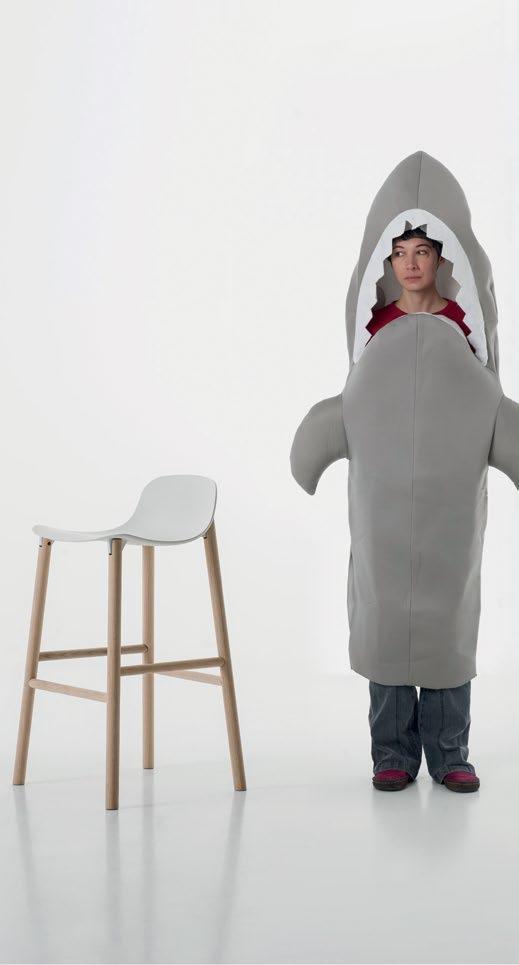

 SHARKY STOOL / Neuland. Paster & Geldmacher
SHARKY STOOL / Neuland. Paster & Geldmacher
77
HOLO / Kensaku Oshiro - Mock Up
Che tipo di rapporto avete con i giovani designer, ricevete molte proposte spontanee?
Riceviamo proposte ogni giorno via mail e poi ci sono i momenti come le fiere in cui si propongono di persona. Crediamo sicuramente nei giovani, si vedano infatti i progetti di Luca Nichetto (la sua prima sedia in assoluta sviluppata con noi) o Monica Graffeo (Young&Design award). Purtroppo di tutti i progetti che riceviamo una percentuale vicino al 10% è effettivamente centrata; le cause sono: progetto banale o qualcosa di già visto, un progetto che non si addice alla nostra collezione. Che consiglio dareste ad un giovane designer che vuole entrare in contatto con un’azienda per proporre una sua idea? Qual è il metodo che ritenete più efficace?
Intanto una cosa che per noi è banale ma da quello che vediamo non lo è, prima di proporsi ad un’azienda bisogna conoscerla. Ad esempio non puoi mandare un progetto dal carattere classico ad un’azienda che produce prodotti dal design moderno, questo significa che stai mandando quel progetto a tutti perdendo tempo tu e lasciando un cattivo ricordo anche all’azienda che il progetto lo riceve perché è evidente che non sai con chi stai parlando. Quindi il primo consiglio è: individua le aziende che realmente potrebbero essere interessate al tuo progetto; interessate perché commercializzano quella tipologia di prodotto e perché hanno una linea di produzione o stile simile. Hai praticamente una cartuccia sola da poter utilizzare e la prima impressione è la più importante. Un po’ come quando si esce con un nuovo ragazzo/a, devi prepararti bene e dare importanza alla persona. Bisogna capire chi è il responsabile dei nuovi
What kind of relationship do you have with young designers? Do you receive a lot of unsolicited proposals?
We receive proposals every day via email; then there are times, like in fairs, when they propose in person. We surely believe in young people; take for example the projects of Luca Nichetto (his very first chair developed with us) or Monica Graffeo (Young & Design award). Unfortunately, of all the projects that we receive only about 10% are actually perfect. The causes are varied: the project is common, already seen or not suited to our collection.
What advice would you give to a young designer who wants to get in touch with a company to propose one of his ideas? Which is the most effective method, in your opinion?
First, a thing that we consider ordinary but from what we see it is not: before proposing to a company, you must know it. For example, you cannot send a project with a classic character to a company that makes products with a modern design; this means you are sending that project to everybody, wasting your time and leaving a bad memory also to the company that receives the project, because it is obvious that you do not know whom you are addressing to. So the first tip is to actually identify companies that could be interested in the project; they could be interested because they are marketing that type of product and they have a similar production line or style. You basically have just one shot and the first impression counts. A bit like when you go out with a new boyfriend or girlfriend: you must be prepared and give importance to the person. You have to understand who is in charge of new projects in the company and get to this person. Sending an email to
Interview 78
progetti nell’azienda che ti interessa e arrivare a lui, mandare una mail a info è paragonabile a comprare un biglietto della lotteria, affideresti i tuoi sogni alla speranza di vincere il primo premio o invece faresti di tutto per arrivarci facendo un po’ di fatica? Quando avrai il contatto di questa persona ricorda che non sei l’unico che lo sta contattando, sii conciso, preparato, organizzato e richiama la sua attenzione. Puoi chiedere un appuntamento di persona, cosa molto difficile da andare in porto oppure inviare il tuo progetto via mail. Il progetto deve avere i requisiti descritti prima: accuratezza del progetto (l’azienda a cui lo propongo potrebbe effettivamente averne bisogno?), spiegare come sei arrivato a quell’idea (le ispirazioni ed il processo sono molto importanti quanto il risultato finale), pulizia, precisione, ecc. Se hai una buona idea ma la proponi male, non corretta, presentata male, il committente penserà che questo è il tuo modus operandi e non si fiderà di te. Qual è l’oggetto che avete prodotto che vi sta più a cuore?
Sicuramente il tavolo Sushi. E stato presentato lo stesso anno in cui è nata l’attuale Kristalia, prima l’azienda sviluppava prodotti legati al mondo del legno e del cristallo (sveliamo così anche il perché del nome dell’azienda). Era il momento della verità, eravamo come la fenice che rinasce dalle ceneri e dovevamo capire se l’indirizzo preso era corretto. Il fatto che tutt’ora vendiamo questo prodotto (sono passati 15 anni) vi fa capire quanto a cuore ci stia.
info would be like buying a lottery ticket: would you entrust your dreams to the hope of winning the first prize or would you do anything to get there by making some efforts? When you get the contact details of this person, remember that you are not the only one who is contacting him: so be concise, prepared, organized and draw his attention. You can ask for an appointment in person, very difficult to obtain, or send your project via email. The project must meet the above mentioned requirements: accuracy (will the company to which I propose actually need it?), explanation about how you got that idea (the inspiration and the process are as much important as the end result), cleanliness, precision, and so on. If the idea is good, but badly presented and incorrect, the customer will think that this is your modus operandi and will not trust you. Among the objects you made, which is the one you cherish the most?
Surely the Sushi table. It was presented the same year in which the current Kristalia was founded; previously the company developed products related to the wood and crystal world (so we also reveal the reason for the name of the company). It was the moment of truth, we were like the phoenix rising from the ashes and we had to figure out whether the direction was the right one. The fact that after 15 years we are still selling this product makes you understand how much we cherish it
79
KRISTALIA SRL Via A. Durante 28 - 33080 Prata (PN), Italy www.kristalia.it
FORESTA, FORESTA BIANCA
Giorgio Scorza Priano Design Studio


Foresta è composto da elementi modulari che si ripetono tra loro. La disposizione dei bracci all’interno protegge gli abiti dall’esterno ed impedendone la caduta per sfioramento. La forma creata è quella di un volume pieno definito, ricordando una scultura.
Foresta is composed of modular elements repeating themselves. The arms are arranged inside so that they can protect the clothes from the outside and prevent them from falling when they are touched. The created form is a defined full volume reminding of a sculpture.


FURNITURE
COAT-HANGER
/
ITALY / +39 3332774520 - www.giorgioscorzapriano.com - gsp@giorgioscorzapriano.com
Federico Villa Fotografo 84
Ph.
Giorgio Scorza Priano Design Studio

Octavia è una famiglia di tavolini semplici da montare, composti da una serie di gambe gemelle ed un piano caratterizzato da una superficie bruciata creando una trama decorativa. La bruciatura laterale della lasercut nobilita il materiale grezzo ed esalta la trama del legno.
Octavia is a family of easy to mount tables, composed of a series of twin legs and a table top featuring a burned surface that creates a decorative pattern. The sideburn of the lasercut ennobles the raw material and brings out the texture of the wood.



FURNITURE / COFFEE TABLE
OCTAVIA 25, OCTAVIA 65 ITALY / +39 3332774520 - www.giorgioscorzapriano.com - gsp@giorgioscorzapriano.com
85
Collaboration with FabLab WEMAKE, Milano / Ph. Federico Villa Fotografo
Marco Guariglia
L’idea per I Love Closet nasce grazie alla figlia del designer che, dopo aver guardato un suo progetto riguardante un armadio per bambini, esclama “deddy questo non è per bambini, è solo un armadio! Io ci voglio giocare!”. Detto, fatto.
The idea for I Love Closet came from the designer’s daughter who, after looking at one of his projects for a children’s closet, cried out: “Daddy, this is not for children, this is just a closet! I want to play there!”. No sooner said than done.




FURNITURE / DRAWER, CHILDREN’S TOY
I LOVE CLOSET TAIWAN / +886 986390095 - www.guarigliadesign.com - guarigliadesign@gmail.com 92
Bloomi fornisce al bambino informazioni semplici e facili sulla pianta in un modo divertente e interattivo. Il bambino conoscerà lo stato generale della pianta attraverso le sue espressioni facciali e i gesti emotivi, e sarà aiutato a imparare un’importante competenza di vita senza annoiarsi.
Bloomi provides the child with simple and easy information about the plant in a fun and interactive way. The child will know the general state of the plant through its facial expressions and emotive gestures, helping them to learn an important life skill without getting bored.



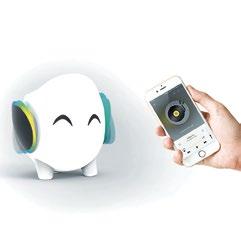
FURNITURE / CHILDERN’S TOY
BLOOMI USA / +1 4703016204 - lylekim.myportfolio.com - gkim306@gatech.edu
Kim Gyeongtae
93
Collaboration with Kimberly Wang
L’idea alla base del Coffee Table in acero sono le gambe che nascono dalla superficie superiore del tavolo e piombano giù verso il suolo attraverso i buchi intagliati. I bordi sono definiti dalle linee increspate sinuose che corrono tutto intorno al prodotto.
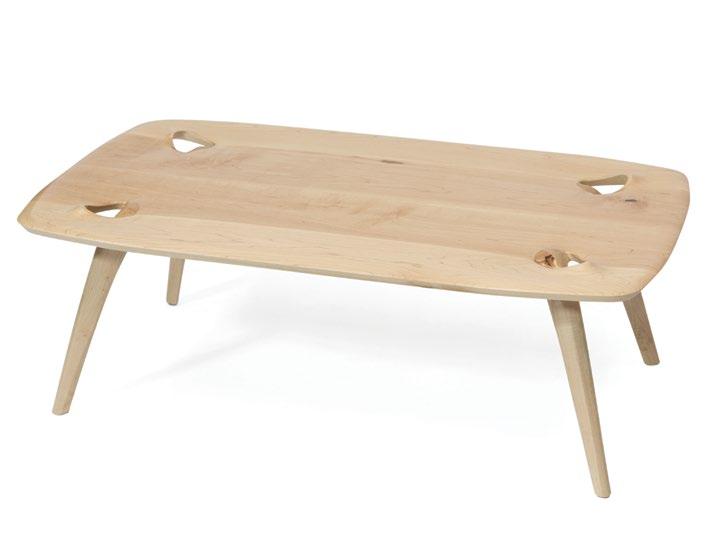

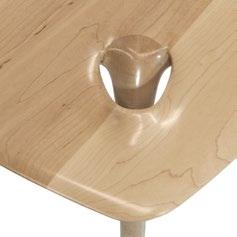
The main concept of this Maple coffee table is to have legs grow from the tabletop surface and drop down to the ground through ‘holes’ they peeled away. Its edges are defined by sinuous crisp lines that run all the way around.
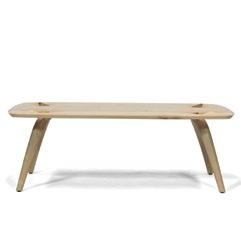
FURNITURE / COFFEE TABLE
COFFEE TABLE UNITED ARAB EMIRATES / +971 566098700 - www.ammarkalo.com - info@ammarkalo.com All Rights Reserved © Ammar Kalo 102
Ammar Kalo
È un sistema di seduta modulare. Design ispirato dalla icona “pin”. Porta il messaggio “Tu sei qui e vivi il presente”. Può essere posizionata all’interno o all’esterno. È un sistema di ripetizione modulare di singole unità.


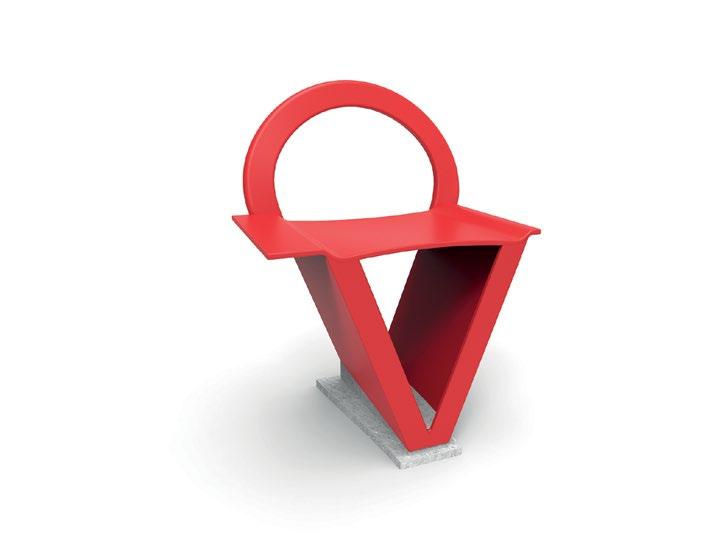
It is a modular public seating system. Design is inspired from pin icon. It gives the message that “You are here and live the moment”. It can be located on indoor and outdoor places. Its modularity is repetition of a single unit.

FURNITURE / BENCH Ozden Kose YOU ARE HERE ITALY / +39 3475447393 - www.ozdenkose.com - ozdenkose.92@gmail.com 103
Ozden Kose
Olips è una lampada da interno. Ispirata alle bioluminescenze delle profondità marine. Queste creature producono una propria luce per muoversi al buio. Olips illumina l’ambiente creando luce diretta e indiretta. Fonte di luce LED.

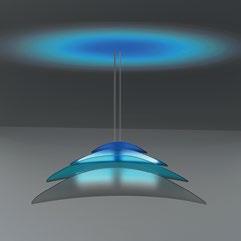
Olips is an indoor lamp. It is inspired from deep sea bioluminescences. These creatures evolved their own way to illuminate dark water. Olips illuminates it environment by creating indirect and direct light . LED sheet is used for light source.

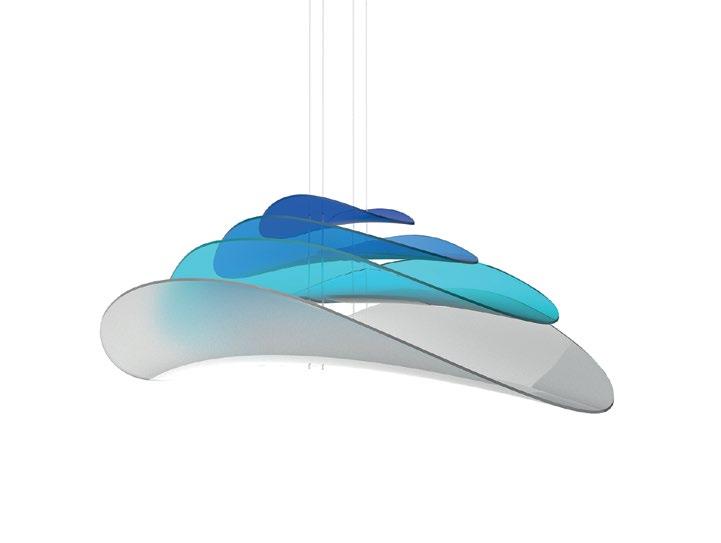
FURNITURE / LIGHTING
OLIPS ITALY / +39 3475447393 - www.ozdenkose.com - ozdenkose.92@gmail.com 104
Sedia ispirata dalla forma del cigno origami. Gli spazi aperti nella zona dei braccioli permettono di riporre degli oggetti. Combina il trend europeo dei mobili facilmente trasportabili con l’estetica asiatica. Il sistema di assemblaggio permette di unire i componenti senza usare utensili.

Chair inspired by the shape of the origami swan. The open spaces in its arms make storage possible. It perfectly combines the current European trend of transport-friendly furniture with Asian aesthetics. Its assembling system allows for connecting components without using tools.



FURNITURE / CHAIR
IGA CHAIR POLAND / +48 661674397 - damiankozlik@gmail.com 105
Damian Koźlik
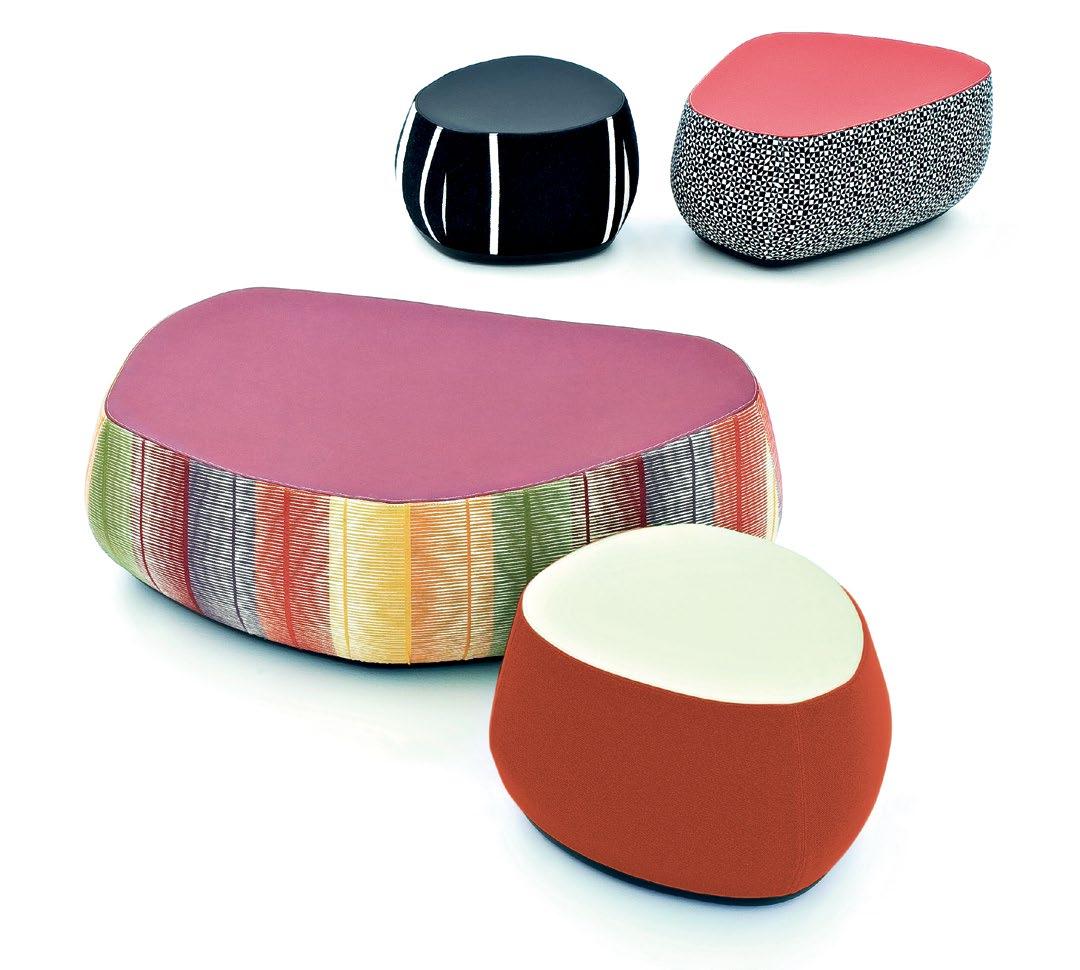
MOROSO
106
FJORD / Patricia Urquiola
Moroso nasce nel 1952 da un progetto di Agostino Moroso che, insieme alla moglie Diana, fonda l’azienda con l’intento di produrre e realizzare divani, poltrone e complementi d’arredo. Puntando su un approccio artigianale nella realizzazione dei prodotti ed un forte impulso creativo nella fase progettuale, si fondano le radici di una visione che ha permesso all’azienda di crescere nel mercato distinguendosi per la qualità, l’innovazione e la creatività dei suoi prodotti. Dagli anni ‘80 la seconda generazione della famiglia inizia un approfondito percorso di ricerca nell’ambito del design d’autore. Quasi sessant’anni dopo la sua fondazione Moroso si posiziona nell’haute couture del design internazionale e diventa un’azienda leader nel settore degli imbottiti. Grazie al contributo creativo di designers quali Ron Arad, Patricia Urquiola, Ross Lovegrove, Konstantin Grcic, Alfredo Häberli, Toshiyuki Kita, Marcel Wanders, Tokujin Yoshioka, Enrico Franzolini, Doshi & Levien, Tord Boontje, Nendo, Front e altri, Moroso ha creato negli anni una collezione di prodotti iconici, dall’impronta unitaria pur salvaguardando latitudini e localismi diversi. Un orizzonte internazionale che ha permesso all’azienda di entrare nei luoghi più belli del mondo fra cui: il Moma di New York, il Palais de Tokyo e il Grand Palais a Parigi, La Biennale di Venezia. Importanti collaborazioni che permettono all’azienda di proporsi con una gamma vastissima e differenziata di prodotti, adatti sia al settore residenziale che a quello contract. Alla cultura familiare dell’azienda si è aggiunta negli anni una forte struttura manageriale, capace di creare sinergie vincenti all’interno del mercato globale degli imbottiti. Un percorso di crescita che
Moroso was established in 1952. It was the brainchild of Agostino Moroso who, with his wife, Diana, founded the company with the objective of making sofas, armchairs and furnishing accessories. An artisanal approach to product manufacturing and extraordinary creativity in the designing stage formed the foundations of a vision which enabled the firm to grow and distinguish itself in the market for its product quality, innovation and creativity. In the Eighties, the second generation of the family launched an exhaustive programme of auteur design studies. Nearly sixty-five years after its founding, Moroso is positioned among the haute couture of international design, a leading company in upholstered-furniture manufacturing. Through the creative input of designers of the calibre of Ron Arad, Patricia Urquiola, Ross Lovegrove, Konstantin Grcic, Alfredo Häberli, Toshiyuki Kita, Marcel Wanders, Tokujin Yoshioka, Enrico Franzolini, Doshi & Levien, Tord Boontje, Nendo, Front and others, Moroso has over the years created a collection of iconic designs. All with an unmistakable Moroso style, yet each exuding the essence of different latitudes and cultures. Its international outlook has introduced Moroso to some of the most beautiful design settings in the world, including MoMA in New York, Le Palais de Tokyo and the Grand Palais in Paris, and the Venice Biennale. Significant partnerships which allowed Moroso to create a vast and varied product range equally suited to residential or contract use. Founded as a family firm, over the years Moroso has gradually added a strong, managerial structure to harness winning synergies in the global upholstered furniture market. A growth trajectory that is integral to
Company Profile
107
parte di una storia fatta di ricerca, innovazione nelle tecnologie e nei materiali, sapiente cura artigiana e di una visione strategica e poliedrica del mercato. Inoltre da sempre Moroso ha posto al centro della sua attenzione la soddisfazione del Cliente, le sue esigenze e aspettative, e la necessità di garantirgli sempre prodotti e servizi di livello e qualità superiore. Ciò, unito ad un forte rispetto per l’ambiente, ha permesso a Moroso di essere la prima azienda di imbottiti ad ottenere dal 1994 la certificazione per la qualità dei cicli produttivi (ISO 9001) e dal 1999 quella per la gestione del sistema ambientale ( ISO 14001). Oggi Moroso ha 140 dipendenti, un fatturato di 30 milioni di Euro, filiali negli Stati Uniti e Gran Bretagna, ed esporta i suoi prodotti in 70 paesi.
Moroso’s tradition of research, technological and material innovation, skilful craftsmanship and a strategic, versatile market vision. Furthermore, Moroso has always focused closely on customer satisfaction, on satisfying customers’ needs and expectations and guaranteeing products and services that are always of the highest standard. This approach, united with a profound respect for our environment, led Moroso to become the first upholstered-furniture manufacturer to be granted ISO 9001 production process certification (in 1994) and, in 1999 ISO 14001 environmental management system certification. Today Moroso has 140 employees, a turnover of 30m and branches in the United States and Great Britain. Moroso exports to 70 countries.

è
108
SPRING COLLECTION / Ron Arad

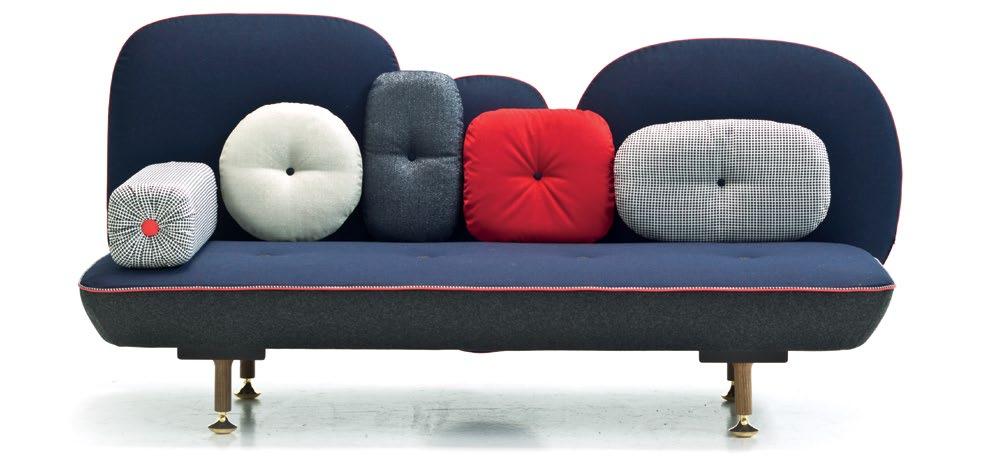
 DIATOM / Ross Lovegrove
GEMMA / Daniel Libeskind
DIATOM / Ross Lovegrove
GEMMA / Daniel Libeskind
109
MY BAEAUTIFUL BACKSIDE / Nipa Doshi & Jonathan Levien



 HUSK / Marc Thorpe
SHADOWY / Tord Boontje
TOUTI / Patricia Urquiola
HUSK / Marc Thorpe
SHADOWY / Tord Boontje
TOUTI / Patricia Urquiola
110
BANJOOLI / Sebastian Herknel
“L’ Africa delle ricchezze e delle modernità merita di essere conosciuta e sostenuta per l’originalità dei linguaggi creativi con cui partecipa all’arricchimento del patrimonio culturale mondiale.”
Patrizia Moroso
I prodotti del progetto M’Afrique sono realizzati in Africa da artigiani locali. Moroso ha iniziato ad utilizzare la tecnica dell’intreccio a mano di fili di plastica usati tradizionalmente per la realizzazione di reti da pesca, segnando il successo della collezione Shadowy di Tord Boontje. La stessa tecnica viene usata ora anche da Bibi Seck e Ayse Birsel che danno vita ad una vasta serie di prodotti dalle forme piacevoli e morbide, come per esempio Madame Dakar, una gigantesca poltrona avvolgente come un’ amaca. E poi la “panca” di Patricia Urquiola, come un tronco di albero seduto sulla sabbia accompagnato da un gemello piccolo, per una seduta singola, e da un tavolino. Marc Thorpe trae ispirazione dal guscio esterno del mais. Il mais costituisce una risorsa a livello planetario, attraversa le frontiere e assume molteplici forme. Le linee curve di BANJOOLI di Sebastian Herkner traggono ispirazione dalla danza di corteggiamento degli struzzi in Africa orientale. Il battito delle ali crea forme sporgenti che sono state trasferite alla silhouette della sedia.
“The wealthy and modern Africa deserves to be known and sustained because of the originality of the creative languages with which it enriches the global cultural heritage.”
Patrizia Moroso
The products of the M’Afrique project are made in Africa by local artisans. Moroso started using the technique of handwoven plastic yarns, traditionally used for making fish nets, marking the success of Tord Boontje’s Shadowy collection. The same technique is now used by Bibi Seck and Ayse Birsel, who created a wide range of attractive softly rounded products, such as Madame Dakar, an enormous armchair as enveloping as a hammock. And then the “bench” by Patricia Urquiola, like a tree trunk sitting in the sand accompanied by a small twin, for a single seat, and a coffee table. Marc Thorpe draws his inspiration from the outer shell of the corn. Corn is a planetary resource; it crosses borders and takes several forms. The BANJOOLI curved lines by Sebastian Herkner are inspired from the courting dance of ostriches in East Africa. The flapping of the wings creates protruding forms that have been transferred to the chair silhouette.
M’Afrique Collection
MOROSO SPA Via Nazionale 60 - 33010 Cavalicco (UD), Italy www.moroso.it 111
LAMAA, Laura Longhi - Marco Poli
Lift me up è una lampada per la lettura con luce soffusa. Il corpo è composto da due parallelepipedi in legno, esternamente finiti al naturale; ruotando il primo verso l’alto la luce si accende e si svela il colore sulla faccia interna della lampada.
Lift me up is a reading lamp emanating a soft light. The body consists of two wooden parallelepipeds with external natural finishing; by rotating the first parallelepiped upwards, the light turns on and the color of the lamp internal face appears.




FURNITURE / LIGHTING
LIFT ME UP ITALY / +39 3494358337 - www.lamaa.it - studio@lamaa.it 114
Una costruzione semplice di tre forme geometriche in acciaio. Ispirato alle linee di Art déco. I telai leggeri sostengono il piano dalle linee sottili. Tutto verniciato a polvere. È facile da spostare grazie ai telai alle estremità. Può essere usato come pratico tavolino flessibile.
A simple construction of three geometric forms in steel. Inspired by the lines of Art deco. The light frames carries the thinlined tabletop. All powder-coated. This table is easy to move around by the end frames in a natural way. Place it as a flexible and practical sidetable.




FURNITURE / TABLE Toke Lauridsen ARTDECO TABLE DENMARK / +45 23624762 - www.tokedesign.dk - toke@tokedesign.dk Ph. Bo egestroem 115
LUNAR Europe GmbH TERA BY LUNAR EUROPE
Il tappetino fitness TERA è un elegante tappeto che si adatta a qualsiasi interno contemporaneo. La superficie intelligente riconosce gli schemi motori e si trasforma senza problemi in un tappetino da ginnastica, mediante l’attivazione di una speciale applicazione TERA.
The fitness mat TERA is an elegant carpet that blends into any contemporary interior. Its intelligent surface recognizes movement patterns and transforms seamlessly into an exercise mat, activating a specially developed TERA app.
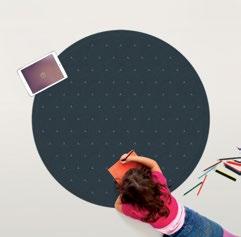


Awards: Red Dot Award, German Design Award, Spark Award

WELLNESS / OTHER
GERMANY / +49 894161470-0 - www.lunar-europe.com - info@lunar-europe.com
122
VELA è un Cycle Trainer che si trasforma in una scultura quando non si usa, spostando quindi il paradigma dell’allenamento in casa. L’integrazione intelligente di splendide proiezioni attorno alla bicicletta crea un’esperienza di allenamento coinvolgente.
VELA is a cycle trainer that transforms into a sculpture when not in use and hence shifts the paradigm of training at home. Clever integration of beautiful projections around the bike create an immersive training experience.
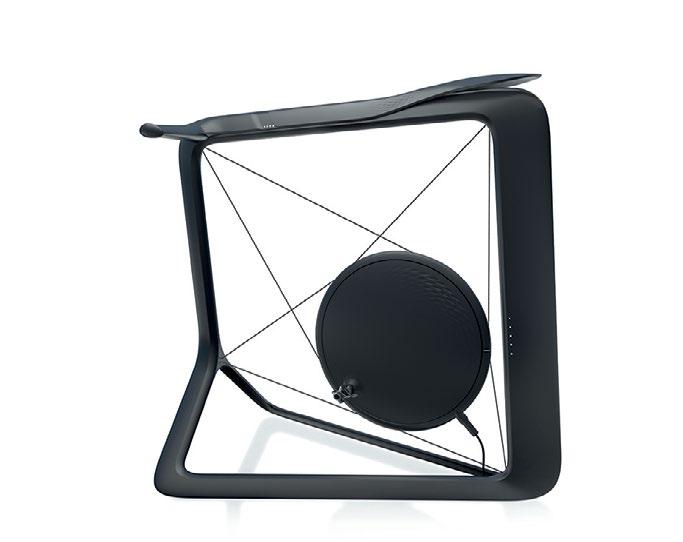
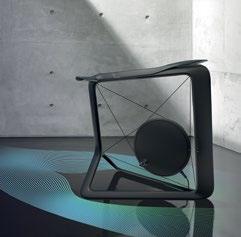
Awards: Red Dot Best of the Best Award, International Design Excellence Awards (IDEA)


WELLNESS / BIKE LUNAR Europe GmbH VELA BY LUNAR EUROPE GERMANY / +49 894161470-0 - www.lunar-europe.com - info@lunar-europe.com
123
Ruoshan Mao
Il set per condimento Rocket è composto da zuccheriera, saliera e pepiera. Ogni pezzo è autonomo e si assembla con gli altri come a formare una sorta di missile. Il concept è stato ispirato dal set per condimento Lilliput.

The Rocket condiment set consists of a sugar bowl, salt castor and a pepper mill. Each component is self-standing and stacks up to form a rocket shape. The concept of this project was inspired by the Lilliput condiment set.



FOOD / KITCHEN ACCESSORIES
CONDIMENT SET AUSTRALIA / +61 421492038 - www.behance.net/mopd - r.mao.work@gmail.com 124
ROCKET
Lampada dalla morfologia essenziale quanto il materiale che la compone. Strutturata su meccanismi basilari che rifuggono quelli della meccanica articolata. Il circuito che alimenta il LED diventa doppia cornice cromata. La luce è direzionabile con un semplice gesto, secondo le esigenze.



A lamp with a basic morphology like the material it is made of. It is structured on basic mechanisms that avoid those of articulated mechanics. The LED supply circuit becomes a double chromed frame. The light can be oriented by a simple gesture, according to needs.
 Dario Marfella
Dario Marfella
FURNITURE / LIGHTING
STAR GATE ITALY / +39 3335963429 - nifada2@hotmail.it 125
MOAK Studio (Designers Kelly Durango C. & Mauricio Sanin M.)
Nei palloni aerostatici, l’aria calda sale e consente di elevare tutta la sua maestà oltre le nuvole. Nella BALÓ LAMP la parte superiore riflette tutta la luce proiettata dalla base per evidenziarne la forma e creare un’atmosfera calda e discreta.

In the aerostatic balloons hot air flows up and allows all its majesty rise among the clouds, in BALÓ LAMP the top part reflects all the light projected from its base to highlight its form and generate a warm and subtle atmosphere.

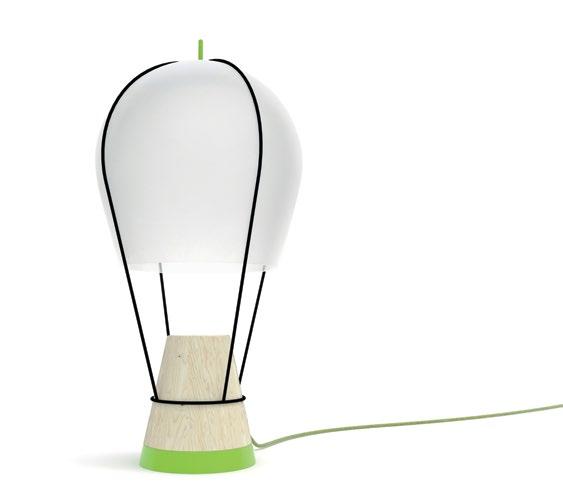
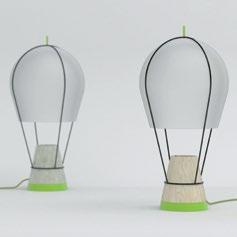
FURNITURE / LIGHTING
COLOMBIA / +57 3122591226, +57 3174299882 - www.moakstudio.com - moakstudio@gmail.com 130
BALÓ LAMP
Il Pouf si presenta come una aggregazione rettangolare di sei moduli in acciaio nichelato portanti cuscini multicolore morbidi al tatto. I sei moduli, tramite delle cerniere, creano un’elevato grado di flessibilità di composizione.

The pouffe consists of a nickel-plated steel module with multicolored cushions which are soft to the touch. By means of hinges more modules can be added, thus creating a high degree of flexibility in terms of composition and personalization.
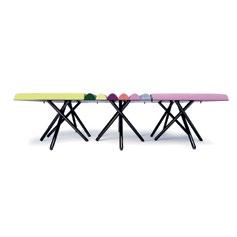

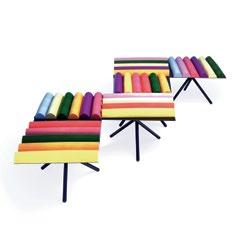
FURNITURE / POUFFE
VIVID ITALY / +39 3931872226 - www.giulianomuzzi.com - info@giulianomuzzi.com 131
Giuliano Muzzi
HORIZON CIRCLE
Giocattolo progettato per tutti i bambini, in particolare autistici o con problemi di vista. Ha la forma di un cerchio illuminato (sistema LED interno) con una serie di pannelli intercambiabili: volti, puzzle o paesaggio. Un semplice meccanismo consente al pannello di muoversi.

Universal designed toy for every children, especially for autistic or those with impaired vision. It has the shape of a lighting circle (with the LED system inside) with a set of interchangeable boards: faces, puzzles or landscape. Simple mechanism allow the board put in motion.

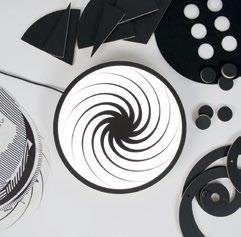

FURNITURE / CHILDREN’S TOY
Pani Jurek
POLAND / +48 691323364 - www.panijurek.pl - monika@gangdesign.pl Consulted with The Educational Centre of The Society for the Care for the Blind in Laski, Poland 144
Sedute in polietilene prodotte tramite stampaggio rotazionale. Legate al concetto di “idea”, queste hanno un’immagine molto evocativa, ma al contempo funzionali ed ergonomiche. Realizzabili in diverse colorazioni, rendono particolare e accattivante ogni luogo, privato o pubblico.

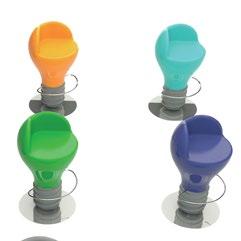

Polyethylene seats manufactured by rotational molding. Linked to the concept of “idea”, they convey a very evocative image, but are at the same time functional and ergonomic. Available in different colors, they make every place, either public or private, special and captivating.

FURNITURE / STOOL
20WATT ITALY / +39 3408932201 - www.pareadesign.com - info@pareadesign.com 145
Parea Design
LORENZO DAMIANI

146
ONLYONE / Lorenzo Damiani for IB Rubinetti
Lorenzo Damiani, nato nel 1972, si è laureato in Architettura presso il Politecnico di Milano. Ha collaborato con diverse aziende tra cui Cappellini, Campeggi, Ceramica Flaminia, Montina, Illy Caffè, IB Rubinetterie, Caimi Brevetti, Luce di Carrara, Lavazza, Nodus. Il Triennale Design Museum di Milano gli ha dedicato la mostra personale “Ma
Dove Sono Finiti gli Inventori? Lorenzo Damiani” curata da Marco Romanelli. La Fondazione Achille Castiglioni gli ha dedicato la mostra personale
“Lorenzo Damiani: Senza Stile”, curata da Giovanna Castiglioni. Ha realizzato diversi allestimenti come, ad esempio, “Tratto Minimo” dedicato ai fratelli Castiglioni all’interno della sesta edizione del Triennale Design Museum. Suoi progetti sono presenti nella collezione permanente del Chicago Athenaeum, del Vitra Museum e del Museo della Triennale.
“Senza idea non c’è progetto” è il pensiero che ha sempre ispirato il designer. In un mondo come quello in cui viviamo, dove esiste già quasi tutto, bisogna trovare un chiaro motivo per cui realizzare un nuovo oggetto, un motivo che ne giustifichi la presenza nel mondo. L’idea è tutto e deve essere coltivata tramite una ricerca continua. Tali convinzioni lo hanno sempre guidato, nutrendo la motivazione che porta a svolgere il lavoro del designer. Per Lorenzo alcuni incontri sono stati importanti, come i riferimenti al mondo dell’arte, anche se le influenze più significative arrivano semplicemente dall’osservazione delle persone immerse nella vita di tutti i giorni. La volontà di ridurre al minimo lo spreco, lo scarto delle risorse disponibili, è legata al suo percorso in modo indissolubile. Per molti
Lorenzo Damiani, born in 1972, graduated in Architecture at the Polytechnic University of Milan. He collaborated with several companies, including Cappellini, Campeggi, Ceramica Flaminia, Montina, Illy Caffè, IB Rubinetterie, Caimi Brevetti, Luce di Carrara, Lavazza, Nodus. The Triennale Design Museum of Milan dedicated him the solo exhibition “Ma dove sono finiti gli inventori?)
Lorenzo Damiani” curated by Marco Romanelli. The Achille Castiglioni Foundation dedicated him the solo exhibition “Lorenzo Damiani: Senza Stile”, curated by Giovanna Castiglioni. He made several set-ups, such as “Tratto Minimo” dedicated to the Castiglioni brothers within the sixth edition of the Triennale Design Museum. Some of his designs are exhibited in the permanent collection of Chicago Athenaeum, Vitra Museum and the Triennale Museum.
“Without ideas there is no project” is the thought that has always inspired the designer. In a world like ours, where almost everything already exists, we need to find a good reason to create a new object, a reason that justifies its presence in the world. The idea is everything and must be cultivated by continuous researches. Such convictions have always guided him, nourishing the motivation behind his work. For Lorenzo, some meetings were important, such as the references to the art world, but the most significant influences just derive from the observation of people immersed in everyday life. The desire to minimize waste, the waste of the available resources, is linked to his path in an indissoluble way. For many years he refused to use marble in his work, because
Designer Profile 147



 SGABELLO / Lorenzo Damiani for Pusterla Marmi - Ph. Andrea Basile
SEDUTA BENNA / Lorenzo Damiani for Da a
SGABELLO / Lorenzo Damiani for Pusterla Marmi - Ph. Andrea Basile
SEDUTA BENNA / Lorenzo Damiani for Da a
148
FAMILY / Lorenzo Damiani for Campeggi TRUCIOLARI COLLECTION / Lorenzo Damiani - Ph. Andrea Basile
anni non ha voluto utilizzare il marmo nei suoi lavori perché riteneva sbagliato servirsene, vista la continua creazione di cave che distruggono il nostro paesaggio. A un certo punto, però, ha capito che sarebbe stato più utile scegliere di usare il marmo in modo più razionale e consapevole, cercando di essere da stimolo anche per altri progettisti; così sono nate numerose sperimentazioni che riguardano l’utilizzo di marmo sottile per realizzare oggetti che, altrimenti, sarebbero stati ricavati dal blocco pieno. Un esempio: per l’azienda Da a che produce componentistica per trattori, ruspe e cingolati, Damiani ha progettato un sistema di panche in lamiera metallica piegata che utilizza gli stessi stampi di piegatura con cui vengono realizzate le benne a uso agricolo. Ha dunque riutilizzato uno stampo di piegatura già esistente per realizzare un nuovo oggetto, del tutto estraneo al contesto per il quale lo stampo stesso è stato prodotto. Quando si parla di risparmio e riutilizzo delle risorse il discorso è sicuramente molto ampio e prende in considerazione i processi di ottimizzazione dell’uso di materiali e tecnologie, fino al riuso degli scarti. Senza dimenticare, ovviamente, anche il significato e la valenza espressiva del progetto – talvolta finalizzato alla denuncia, a stimolare una riflessione – che possono essere intesi come una funzione vera e propria. Per il designer è indispensabile trovare il motivo vero per cui iniziare il progetto e questa scintilla può e deve essere un’idea, anche minima, magari riferita semplicemente all’uso alternativo di un materiale conosciuto come il truciolare oppure a un joystick che diviene spunto per creare un nuovo meccanismo all’interno di una collezione di rubinetti.
he thought it was wrong, given the continuous creation of quarries that destroy our landscape. At some point, however, he realized it would be more useful to use marble in a more rational and conscious way, trying to be a stimulus also to other designers; that is how numerous experiments were born related to the use of thin marble to create objects that would otherwise have been machined from solid block. For example, for Da a, a company that manufactures components for tractors, bulldozers and excavators, Damiani designed a system of bent metal sheet benches using the same bending molds employed to manufacture agricultural skips. He thus reused an already existing bending mold to make a new object that is entirely foreign to the context for which the mold itself was manufactured. When speaking of saving and reusing resources, the issue is definitely very broad and takes into account the optimization processes for the use of materials and technology, up to the waste reuse. Not forgetting, of course, the meaning and the expressive value of the project - sometimes aimed at denouncing and stimulating reflection - which can be understood as a real function. For the designer it is essential to find the real reason to start the project, and this spark can and should be an idea. However small, it may simply refer to the alternative use of a known material, such as chipboard or a joystick that gives inspiration to create a new mechanism inside a collection of taps.
149
Qual è stato il primo contatto con un’azienda importante? Ci sono particolari ricordi, aneddotti e sensazioni che vuoi raccontare?
Il primo contatto con un’azienda non si scorda mai e, per me, ha coinciso con la conseguente “prima porta in faccia”: anche quella si dimentica difficilmente e… svariati successivi incontri con aziende hanno avuto lo stesso risultato; ricordo che erano gli anni novanta in cui frequentavo ancora la Facoltà di Architettura del Politecnico di Milano. Questo per dire che non bisogna mai arrendersi e, al tempo stesso, cercare di capire i motivi per cui le proprie idee non vengono accettate, senza dare la colpa necessariamente agli altri. Credo che una buona e sana autocritica sia alla base di ogni attività progettuale. Dovremmo ricordarci sempre che non progettiamo solo per noi. Quale consiglio daresti ai giovani designer che vogliono emergere?
Non voglio dare consigli a nessun designer che abbia solo l’obiettivo di emergere sugli altri… o diventare famoso, non credo che il fine del proprio lavoro debba essere quello. Mi piacerebbe che i più giovani di me cercassero una soddisfazione personale attraverso la realizzazione di progetti interessanti, nuovi e con una giustificazione di esistere all’interno del panorama contemporaneo del design. Servono tanto lavoro e fatica, perché il dorato mondo del progetto non è fatto di aperitivi e feste ma – invece - di lunghe giornate passate a fare ricerca e a progettare, andando da artigiani per imparare come realizzare le proprie idee. Bisogna tornare a “sporcarsi ancora le mani nella materia”, bisogna saper lavorare i materiali per capirne i limiti progettuali, serve tanto lavoro
Which was your first contact with a major company?
Are there any special memories, anecdotes or feelings you would like to tell?
The first contact with a company is never forgotten. In my case, it coincided with the “first door shut in the face”, which is also difficult to forget. Several meetings with other companies followed, all having the same result. I remember we were in the nineties and I was still attending the Faculty of Architecture at the Polytechnic University of Milan. This is to say that we should never give up and, at the same time, we should try to understand why our ideas are not accepted, without necessarily putting the blame on others. I believe that a good and healthy self-criticism should be at the basis of each design activity. We should always remember that we do not plan just for us.
What advice would you give to young designers who want to emerge?
I am not going to offer advice to any designer, whose only target is to stand out... or become famous, I do not think that this should be the purpose. I would like younger generations to look for personal satisfaction through the realization of interesting and new projects, justified within the contemporary design scene. What is needed is a lot of work and effort; the gilded design world is not just aperitifs and parties, but long days spent doing research and designing, visiting artisans to learn how to implement one’s ideas. We need to “get our hands dirty” again and know how to work the materials to understand their design limits. So much practical work is needed, combined with thought and curiosity to create new possibilities of use and types of objects. In
Interview 150
pratico unito al pensiero e alla curiosità per creare nuove possibilità di utilizzo e tipologie di oggetti: insomma, consiglierei ai più giovani di fare molta sperimentazione e frequentare meno la mondanità di questo settore che sovente altera la visione delle cose.
Molti dicono che si è progettato di tutto e che le idee sono sempre meno innovative ed interessanti di una volta, cosa ne pensi di questa affermazione? Credo che si possa affermare tutto e il suo contrario… certamente esistono tipologie di oggetti che hanno raggiunto ormai quasi il giusto equilibrio della loro fase evolutiva e, quindi, tutti i nuovi prodotti che riguardano le suddette tipologie non fanno altro che apportare leggere modifiche che, però, se fatte in modo corretto rappresentano – comunque - una sorta di evoluzione della specie… anche se magari parliamo di sfumature. Esistono, invece, degli oggetti ancora tutti da immaginare perché il mondo è da sempre in continua trasformazione e stiamo assistendo a una smaterializzazione della fisicità di alcuni oggetti… a nuove domande servono nuove risposte.
Qual è secondo te il modo corretto di progettare rivolgendo uno sguardo al futuro?
Ormai l’offerta merceologica è asfissiante… una delle possibili vie d’uscita per avere uno sguardo verso il futuro credo sia la ricerca dell’idea all’interno del progetto, di un’idea anche semplice ma nuova o poco esplorata. Non è un atteggiamento nuovo ma, sicuramente, è quello che ritengo ancora il più utile: diamo forza alle idee riflettendo sempre sul senso delle cose.
short, I would recommend young people do a lot of experimentation and not spend too much time with the high society of this sector, which often alters the vision of things.
Many are saying that everything has already been designed and that ideas are increasingly less innovative and interesting than once, what do you think of this statement?
I guess you can say anything and everything. There certainly are types of objects that have almost achieved the appropriate balance in their developmental stage and, therefore, all the new products related to the above categories only show slight changes. However, if these changes are made properly, they represent - anyway - a sort of evolution of the species ... even if we may just speak of shades. There are, however, objects that have yet to be imagined, because the world has always been constantly changing and we are witnessing a dematerialization of the physical nature of some objects... New questions need new answers.
Which is the proper way to design with a look to the future, in your opinion?
The product offer has by now become unbearable... I believe that one of the possible ways out to the future is the search for the idea within the project, even a simple one but new or little explored. It is not a new approach but, surely, a more useful one: let’s give ideas all the support we can, always reflecting on the meaning of things.
LORENZO DAMIANI Italy
www.lorenzodamiani.net
151
Andrea Pasquali
Caratterizzata da linee grafiche e da un design organico ed avvolgente, la sedia Kira è realizzata in tondino di acciaio saldato e verniciato a polveri con finitura cromata o opaca. Adatta sia per ambienti interni che esterni.
Distinguished by graphic lines and by an organic and captivating design, the product is a chair made of steel soldered and painted with powder chromate or matte finishing. Perfect both for the inside and the outside.

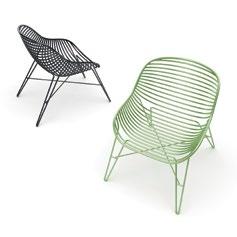


FURNITURE / CHAIR
KIRA ITALY / +39 0510950656 - www.hd4design.com - info@hd4design.it 152
Tavolino basso dal richiamo naturale che ricorda il corpo di un insetto e la sua leggerezza. Il top è composto da due parti uguali in ferro verniciato a polveri, tagliate laser e piegate, mentre la struttura è in legno massello.
Coffee table that reminds the nature which recall the body of an insect and its lightness. The upper section is made of two identical part of iron painted with powder, laser cut and folded, while the structure is made of solid wood.




FURNITURE / COFFEE TABLE
NINFA ITALY / +39 0510950656 - www.hd4design.com - info@hd4design.it 153
Andrea Pasquali
Alessandra Pennino
Portatovaglioli e bicchieri, un unico supporto per due elementi indispensabili per la tavola. La superficie in ceramica permette di personalizzare l’oggetto durante la sua produzione, realizzando decorazioni di diverso stile.
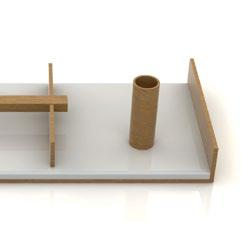

Napkin holders and glasses, one only support for two elements that are indispensable to the table. The ceramic surface allows to customize the object during its production, creating different style decorations.

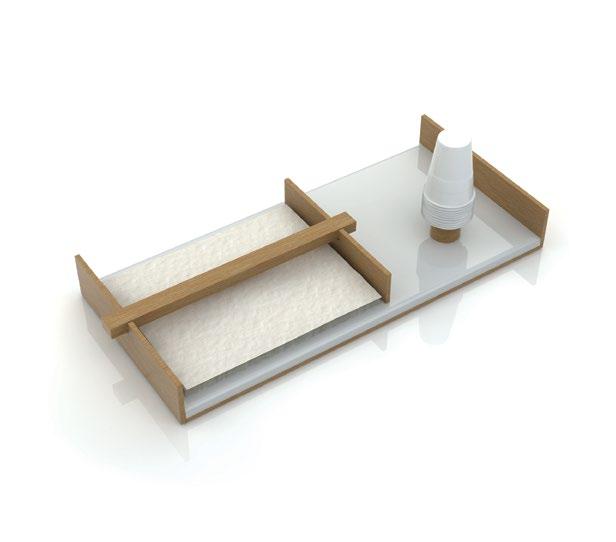
FOOD / KITCHEN ACCESSORIES
CHANGE ITALY / +39 3274552788 - www.penninhome.com - alessandra-pennino@hotmail.com 154
Vassoio rettangolare scorrevole per tavoli rettangolari o ovali. L’oggetto, con la superficie in ceramica, può essere decorato, ed è grazie ad essa che si possono appoggiare pietanze calde, senza dover ricorrere ad ulteriori supporti.
Change Rettangolare is a sliding rectangular tray for rectangular or oval tables. The object, with a ceramic surface, can be decorated; hot dishes can be placed on the surface without requiring additional supports.



 Alessandra Pennino
Alessandra Pennino
FOOD / KITCHEN ACCESSORIES CHANGE RETTANGOLARE ITALY / +39 3274552788 - www.penninhome.com - alessandra-pennino@hotmail.com 155
Il design si ispira allo stile scandinavo. Tutti gli elementi non essenziali sono stati accuratamente rimossi per ottenere semplicità ed eleganza. L’intera superficie della seduta è in legno impiallacciato curvo che, pur essendo leggero, fornisce un solido sostegno.


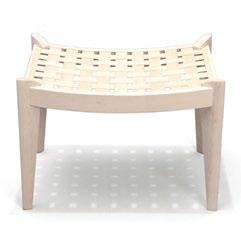
The design is inspired by the Scandinavian style, carefully removing all non-essential elements to achieve simplicity and elegance. The whole seat surface is made by curved wood veneer, which has a light weight while providing a firm support.

FURNITURE / STOOL
THE STOOL USA / +1 (585)5035851 - www.serenapu.com - serena.pu8@gmail.com 162
Xiaoxiao Pu
In AperiTABLE è la forma stessa che permette di appendere tutto intorno i calici mentre la superficie viene utilizzata per i vari stuzzichini. Inoltre il ripiano è incastrato alla struttura senza necessità di viti o saldature.
The form of AperiTABLE itself allows to hang everything around the glasses, while the surface is used for the various snacks. Furthermore, the shelf is stuck in the structure without any screws or weld seams.


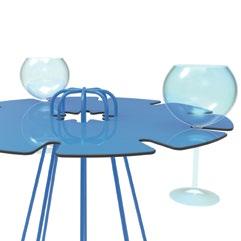
Niccolò Raffaelli

FURNITURE / COFFEE TABLE
APERITABLE ITALY / www.raffaellidesigner.com - raffaelli.designer@gmail.com 163
BREAK TIME
Chiara Ranghetti e Miriam Ronchi
BREAK TIME è un set da tè dalle forme morbide. La teiera presenta nella parte superiore due fessure e all’interno due piani forati, punti d’appoggio per la bustina. I piattini delle tazze hanno due incastri per bloccare il cucchiaio e avere stabilità durante il trasporto.
BREAK TIME is a tea set with soft shapes. The teapot features two slots in the top part and two perforated planes inside to support the packet. The saucers have two grooves to block the spoon and ensure stability during transportation.


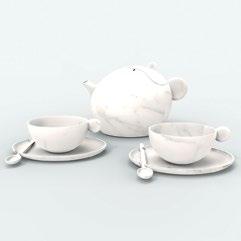
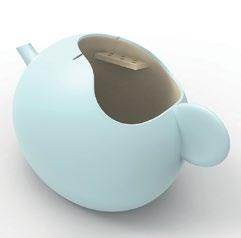
FOOD / KITCHEN ACCESSORIES
ITALY / +39 3386297445 - myriam.ronchi@gmail.com 166
Il concept della sedia Infinitè è una linea infinita, come disegnare senza mai staccare la penna dal foglio. Può aggiungere un tocco speciale ad ogni tipo di spazio con la sua forma realizzata in matallo colorato e plastica, completata dal tessuto multicolore.
The concept of Infinité chair is an endless line, like drawing without lifting a pen. It can add a special touch to any kind of space with its shape made of colorful metal or plastic frame, completed with multicolored upholstery.


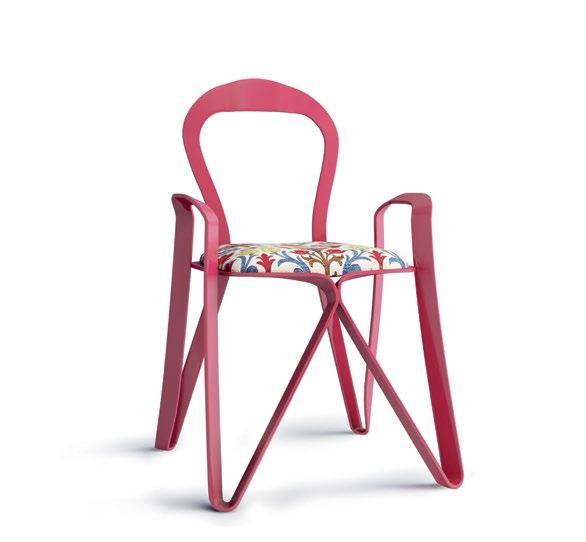

FURNITURE / CHAIR Elene Ratishvili INFINITÉ GEORGIA / +995 593521379 - www.behance.net/EleneRatishvili - elena.ratishvili@gmail.com 167
Elene Ratishvili
Readinglover è una sedia-lampada, inclusa in un telaio di legno e metallo con seduta in cuscini di peluche ed un paralume in tessuto. Crea così un posto perfetto con luce accogliente e seduta confortevole per rilassarsi al meglio, magari leggendo un libro.


Readinglover is a chair-lamp combo, comprised of a wood and metal frame with plush seat cushions and fabric lampshade. It creates a perfect spot with cozy lighting and comfortable seat to relax and feel at your best while reading.


FURNITURE / CHAIR, LIGHTING
READINGLOVER GEORGIA / +995 593521379 - www.behance.net/EleneRatishvili - elena.ratishvili@gmail.com 168
Marco Rubini Architetto designer



Le faccine, tre caratteri con la responsabilità di riassumere e rappresentare la complessità e il rigore del linguaggio e dell’emotività umana. Le sedute emoticons series richiamano gli umani “digitali” alla conversazione face to face.
Emoticons, three characters having the responsibility of summarizing and representing the complexity and the rigor of language and human emotionality. The seats of the emoticons series recall “digital” humans to face to face conversation.

FURNITURE / CHAIR
E
ITALY / +39 3397728029 - www.marcorubini.com - architettorubini@gmail.com 169
EMOTICONS CHAIR, HAPPY, SAD, WINKY
NO.E.
AD / ALESSANDRO DUBINI

172
TWITABLE / Alessandro Dubini for Seletti
Alessandro Dubini è un designer italiano. Dopo gli studi di Architettura e Design a Milano e laurea in ingegneria, apre il suo primo studio professionale a Como, Italia. Dal 2004 lo Studio Alessandro Dubini si trova a Monte Carlo, Principato di Monaco.
Per Alessandro, il design è il mezzo per migliorare la qualità della vita di tutti i giorni, sia dal punto di vista estetico che funzionale. Il suo lavoro é intuitivo ed eclettico, caratterizzato dall’eleganza spesso accompagnata da un tocco giocoso, magico. Sempre alla ricerca dell’ equilibrio ottimale fra le prestazioni tecnico-funzionali che il prodotto deve possedere e le sollecitazioni culturali di crescente importanza per la buona riuscita di un prodotto valido e duraturo, sia nel suo rapporto con l’uomo che con l’ambiente. La sua visione del progetto si basa anche su maggior studio delle variabili sensoriali collegate alla scelta dei materiali (viste come un modo per migliorare la vita usufruibile del prodotto) e un’analisi della sostenibilità del prodotto stesso nel futuro. Con questi propositi, Alessandro ridefinisce l’arte decorativa per i tempi contemporanei, usa materiali e tecnologie innovative con grande sensibilità del design, creando atmosfere e oggetti di forte impatto emotivo. Sempre attento ai trends culturali e sociali, Alessandro considera imprenscindibile il legame tra moda e design, sia per quanto riguarda le tendenze di colori e materiali utilizzati, sia per le scelte delle forme che degli accostamenti. Inconsapevolmente o meno, le tendenze della moda influenzano entrambi: i designers così come i consumatori stessi.
La sua formazione e professione di architetto, hanno sicuramente influito ad un altro segno distintivo del
Alessandro Dubini is an Italian designer. After studying Architecture and Design in Milan and graduating in Engineering, he opened his first studio in Como, Italy. Since 2004, Alessandro Dubini’s studio has been located in Montecarlo, Monaco.
For Alessandro, design is the means to improve the quality of everyday life, both from an aesthetic and functional point of view. His work is intuitive and eclectic, featuring an elegance often accompanied by a playful and magical touch. He is always looking for an optimal balance between the technical and functional performance that the product must meet, and the increasingly important cultural demands for the good outcome of a valid and lasting product, both in the relationship with the man and with the environment. His vision of the project is also based on a more profound study of the sensory variables related to the choice of materials (considered as a way to improve the product’s usable life) and an analysis of the product sustainability in the future. With these intentions, Alessandro redefines the decorative arts to contemporary times, using innovative materials and technologies with a great design sensitivity, creating atmospheres and objects with a strong emotional impact. Always aware of the cultural and social trends, Alessandro thinks that the link between fashion and design is essential, both in terms of color and materials trends, both for the form and combination choices. Unknowingly or not, fashion trends affect both the designers and the consumers themselves.
His architect education and profession have certainly influenced another distinctive sign of Alessandro’s
Profile
Designer
173
design di Alessandro, ossia attenzione ai dettagli e alle proporzioni. La ricerca di una fluida interazione tra volume e spazio si traduce anche nel suo design, che cerca di creare oggetti che possano coabitare in perfetta armonia con lo spazio circostante, senza rinunciare ad una loro identità estetica. Curioso e creativo, grande viaggiatore, amante della natura e dell’arte in tutte le sue declinazioni, Alessandro lavora internazionalmente muovendosi liberamente dal design all’architettura, dalla direzione artistica alle installazioni d’arte.

Il suo design include progetti per Frag, i4Mariani, Lema, Seletti, Varaschin e Zanotta tra gli altri.
design, that is the attention to detail and proportions. The search for a smooth interaction between volume and space is also reflected in his design, which tries to create objects that can coexist in perfect harmony with the surrounding space, without giving up their own aesthetic identity. Curious and creative, a great traveler and lover of nature and art in all its forms, Alessandro works on an international basis shifting freely from design to architecture, from art direction to art installations.
He realized design projects for Frag, i4Mariani, Lema, Seletti, Varaschin and Zanotta among others.
174
SAVILE ROW / Alessandro Dubini for i4Mariani
Qual è stato il primo contatto con un’azienda importante? Ci sono particolari ricordi, aneddoti e sensazioni che vuoi raccontare?
Il primo contatto con un’azienda importante ha coinciso, nel mio caso, con la mia prima esperienza nel mondo del design. L’azienda in questione era Zanotta. Il progetto che gli avevo proposto era basato su una tecnologia ed uso del materiale molto innovativo e Zanotta a mio avviso era l’azienda più adatta per realizzarlo. L’intuizione si è rivelata quella giusta e il progetto, che era parte del catalogo Edizioni in serie firmata e limitata, ha avuto molto successo sia con il pubblico che con la stampa. Solo più avanti ho compreso quanto fossi stato fortunato e quanto in realtà sia difficile avere la possibilità di presentare i propri progetti alle aziende.
Quale consiglio daresti ai giovani designer che vogliono emergere?
Il mondo del design di oggi è molto competitivo e quindi non è facile emergere. Il consiglio che darei è quello di fare un bel progetto, magari con un materiale innovativo per suscitare l’interesse delle aziende. Per proseguire a fare questo lavoro poi, bisogna armarsi di tanta pazienza e resilienza, fare dei prodotti ben disegnati e ‘cost effective’, e soprattutto allineati con l’identità del brand al quale si vuole proporre il progetto.
Molti dicono che si è progettato di tutto e che le idee sono sempre meno innovative ed interessanti di una volta, cosa ne pensi di questa affermazione?
Che si sia progettato tanto fino ad ora è sicuramente un’affermazione valida, ma credo comunque che ci sia spazio per progettare ancora molto nel presente ed anche nel futuro. Viviamo in un contesto di cambiamento ed evoluzioni continue, sia dal punto
Which was your first contact with a major company?
Are there any special memories, anecdotes or feelings you would like to tell?
In my own case, the first contact with an important company coincided with my first experience in the design world. The company was Zanotta. The project I proposed was based on a very innovative technology and use of materials and I thought Zanotta was the most appropriate company to make it. The intuition turned out to be right and the project, which was part of the Edizioni catalogue, in signed and limited series, had a great success both with the public and the press. Only later did I realize how lucky I had been, and how difficult it is to have the opportunity to present one’s projects to companies.
What advice would you give to young designers who want to emerge?
Today the design world is a very competitive one; that is why it is not so easy to emerge. The advice I would give is to make a good project, perhaps with an innovative material to arouse the interest of the companies. Then in order to keep on doing this work, one must arm oneself with patience and resilience, make well-designed and ‘cost effective’ products, which are above all aligned with the brand identity to which they will be proposed. Many are saying that everything has already been designed and that ideas are increasingly less innovative and interesting than once, what do you think of this statement?
That much has been designed so far is definitely a valid statement, but I believe there is still much space, now and in the future. We live in a context of change and continuing evolution, both from the
175

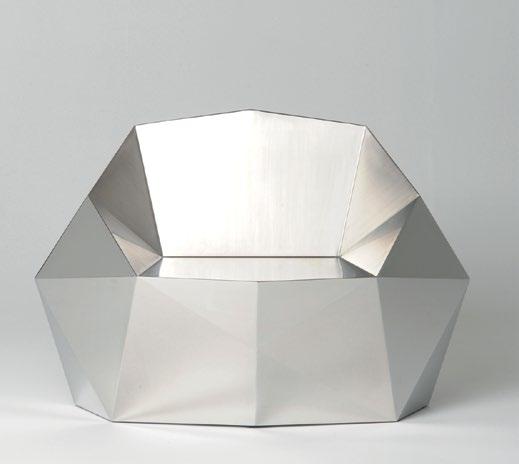
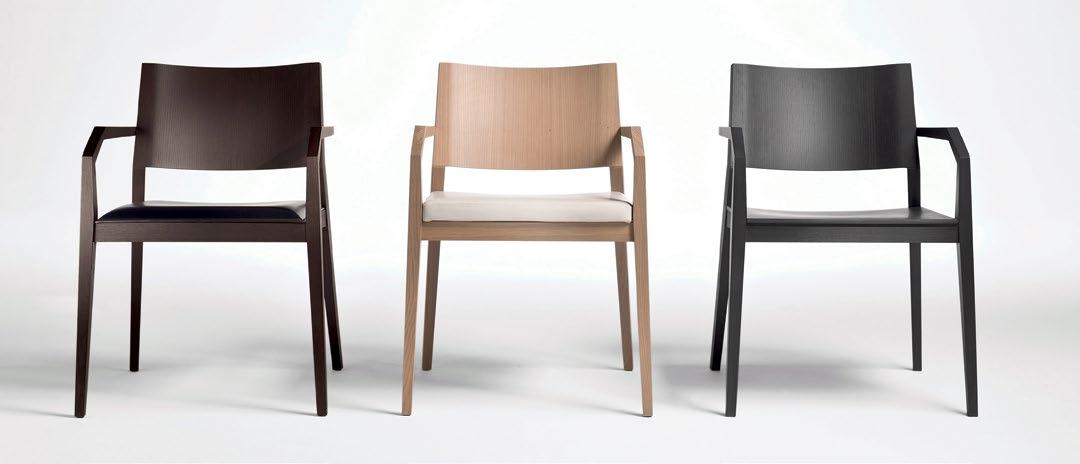 MAGISTRA / Alessandro Dubini for i4Mariani
DIAMOND / Alessandro Dubini for Iqonik
MAGISTRA / Alessandro Dubini for i4Mariani
DIAMOND / Alessandro Dubini for Iqonik
176
BEAT / Alessandro Dubini for i4Mariani
di vista del consumatore che dallo sviluppo di nuove tecnologie e materiali. Per quanto riguarda la forma invece, credo che anche qui ci sia ancora la possibilità di crearne delle nuove, anche utilizzando materiali tradizionali. Via libera alla fantasia!! Qual è secondo te il modo corretto di progettare rivolgendo uno sguardo al futuro?
Il miglior modo di progettare include sicuramente una considerazione del cambiamento e dell’evoluzione dei quali parlavo prima, ossia le nuove o diverse esigenze dei consumatori e lo sviluppo delle nuove tecnologie e materiali. Questo ci permette non solo di creare dei nuovi prodotti, ma anche di migliorare quelli esistenti sia dal punto di vista estetico che funzionale.
Quali sono le principali differenze nell’approccio alla progettazione tra un designer italiano e uno straniero?
Credo che dipenda da molti fattori, ogni paese/ cultura influenza i propri designers. Quelli italiani sono molto privilegiati essendo cresciuti con un patrimonio culturale ed artistico importantissimo, con un forte senso estetico e l’apprezzamento del bello. Personalmente amo molto la leggerezza e la sensibilità dei designers giapponesi con le loro linee pure ed un’eleganza quasi poetica. Il design nordico invece privilegia la materia, le forme semplici e funzionali mettendo al bando le decorazioni superflue. Ad ogni modo gli approcci sono diversi e contribuiscono a creare dei prodotti con caratteristiche differenti tra loro ed è questo il bello!
point of view of the consumer and in terms of the development of new technologies and materials. As regards the form instead, I think that here there is still the possibility to create new ones, also using traditional materials. Green light to imagination!!
Which is the proper way to design with a look to the future, in your opinion?
The best way to design definitely includes a consideration of the change and the evolution I was speaking of before, that is new or different needs of consumers and the development of new technologies and materials. This allows us not only to create new products, but also to improve existing ones, both aesthetically and functionally. What are the main differences in the approach to design between an Italian and a foreign designer?
I think it depends on many factors; each country/ culture influences their designers. The Italian designers are very privileged as they grew up with a very important artistic and cultural heritage, a strong aesthetic sense and appreciation of beauty. Personally I really love the lightness and sensitivity of Japanese designers with their pure lines and an almost poetic elegance. Nordic design instead focuses on the matter, simple and functional forms, banning superfluous decoration. Anyway the approaches are different and help create products with different characteristics: that’s the beauty!
Italy www. alessandrodubini.com 177
AD / ALESSANDRO DUBINI
Antonio Saporito
Linea di sgabelli in legno, multistrato di betulla, con geometrie essenziali, puramente statiche e funzionali. L’immagine degli elementi portanti, ricordano le squadre da disegno, mentre la struttura, quella delle travi reticolari nelle costruzioni.

Wooden stools set made of birch multi-layered, with essential geometries, static and functional. The imagine of the supporting elements remembers T-squares, while the structure recalls beams in a lattice of the construction industry.

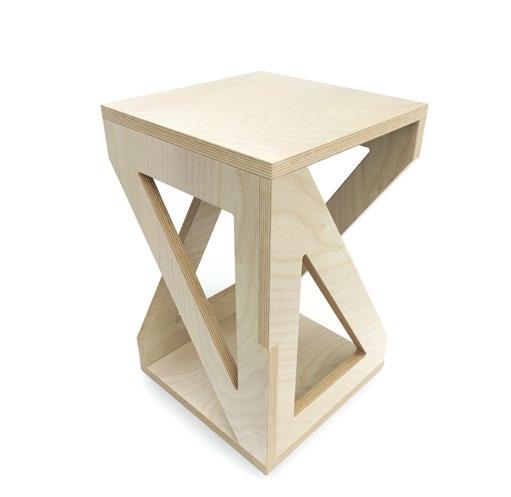

FURNITURE / STOOL
PITAGORA ITALY / +39 3397480458 - www.antoniosaporito.com - saporarch@virgilio.it
180
Render&Ph. Antonio Saporito, Stefano Carovani
Sistema espositivo che aiuta in modo concreto il produttore nel momento dell’allestimento e della vendita, ma al tempo stesso ha lo scopo comunicare al consumatore i valori etici legati ai prodotti alimentari tipici e locali.


Exhibition system that helps for real the producer during the setting up and selling time, but at the same time, its purpose is to communicate the consumer the ethical values of the typical and local food.

 Arianna Sbaffi
Arianna Sbaffi
EXHIBITION / STAND
– THINK GLOBALLY, ACT LOCALLY ITALY / +39 3204152604 - arianna.sbaffi@gmail.com 181
STANDUP
Arianna Sbaffi
È una lampada che non ha il solo scopo di illuminare, ma ha anche la capacità di regalare emozioni. L’idea nasce da un ricordo dell’infanzia. Quando da bambini, durante le notti estive si giocava a rincorrere le lucciole.
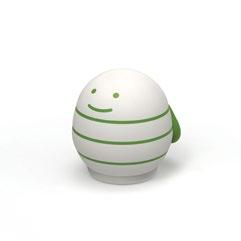


It is a lamp that not only illuminate, but has also the capacity of giving emotions. The idea arises from a childhood memory when, as children, during the summer nights it was possible to play chasing the fireflies.

FURNITURE / LIGHTING
ITALY / +39 3204152604 - arianna.sbaffi@gmail.com 182
FIREFLIES
Luca
Sgrilli Architetto - SEI Architettura

Rag Furniture è il concept con cui si crea arredo per sovrapposizione di “cenci”, i quali saranno riciclati, cioè scarti o avanzi di altre produzioni, oppure nuovi. I modelli qui presenti sono il Rag Roll in due versioni, con taglio e rotazione di parti del cilindro in pezza.


Rag Furniture is the concept at the base of furniture made by overlapped “rags”. These can be recycled rags, i.e. production wastes or scraps, or new ones. The models presented here are the Rag Roll in two versions, with cutting and rotation of rag cylinder parts.

FURNITURE / SOFA
RAG FURNITURE
RAG ROLL ITALY / +39 3393336738 - sgrilliluca@hotmail.com
Architetto, Marta Marini Architetto Junior 183
COLLEZIONE
- MODELLO
Collaboration with Lorenzo Gentili
Studio bettisatti_architetture
Sapio, tris di posate in ottone. L’accessorio multiplo forchettabacchetta rappresenta in modo singolare la fusione delle diverse culture a tavola valorizzando l’essenza dell’esperienza relazionale, culturale ed estetica.
Sapio, a trio of brass cutlery. The fork-stick multiple accessory represents a particular fusion of the different cultures at the table, enhancing the essence of the relational, cultural and aesthetic experience.
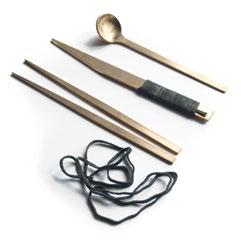



FOOD / KITCHEN ACCESSORIES
SAPIO ITALY / +39 3926674145, +39 3201972018 - www.bettisatti.it - info@bettisatti.it 186
FURNITURE / COFFEE TABLE, CHILDREN’S TOY



Il modulo superiore è in MDF laccato. Il modulo inferiore e le gambe sono in quercia. Tutti i fori sono tagliati con una macchina CNC. Set di mini elementi in quercia solida (varie taglie e forme) – 30 pezzi realizzati a mano e oliati con olio di semi di lino. 4 Concrete e 4 PVC walls.
Top and top module made of lacquered MDF. The lower module and legs made of oak. All holes cut by CNC machine. Set of mini elements of solid oak (various sizes and shapes) - 30 pcs. made by hand and oiled linseed oil. 4x Concrete and 4x PVC walls.

POLAND / +48 500569498 - www.olgaszymanska.com - info@olgaszymanska.com 187
Olga Szymanska HUS TABLE HOUSE
ALCHEMIST’S LAMP
twelvemonthly (Dongkyu DK Lee / Junghoon Lee)
Ciò che creiamo è significativo per la nostra storia, alchimisti del mondo moderno. Ecco perché i designer hanno esplorato oggetti quotidiani degli alchimisti. Alchemist’s Lamp è una beuta che galleggia e illumina la scrivania. L’attenuazione della luce è controllata dalla manopola.
We are all alchemists of the modern world. They explored some daily stationary objects inspired by alchemist’s inventories: Alchemist’s Lamp is inspired by the shape of a flask. It floats to light up your desk. The level of dimming is controlled by rotating the knob.


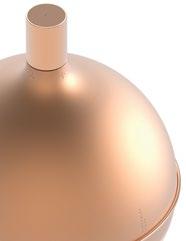

FURNITURE / LIGHTING
USA / +1 (669)2149850 - www.12monthly.com - jodesi82@gmail.com, jeriel82@gmail.com Concept by twelvemonthly 190
Promesso coffee machine offre gusto, esperienza e design. Adattata alle richieste degli spazi degli uffici moderni in continua evoluzione, Promesso coffe machine include una combinazione unica di caffè di prima qualità, personalizzazione e variazione finale.

The Promesso coffee machine offers taste, experience and design. Tailored to the requirements of the ever-changing modern office environment, the Promesso coffee machine encompasses a unique combination of premium coffee, ultimate personalisation and variation.
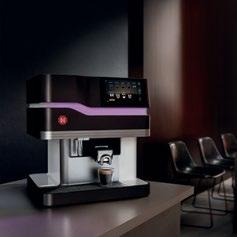
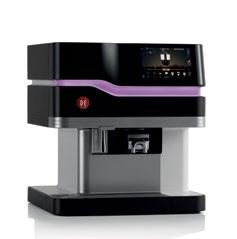

FOOD / KITCHEN ACCESSORIES VanBerlo
DOUWE EGBERTS, PROMESSO THE NETHERLANDS / +31 402929090 - www.vanberlo.nl - info@vanberlo.nl Ph. JDE & VanBerlo 191
JACOBS
BOISERIE è il modello tridimensionale di WALLI, un rivestimento murario in cartone riciclabile, ecosostenibile, non invasivo e personalizzabile, che reinterpreta in chiave moderna le decorazioni murarie della Francia del XVII sec.
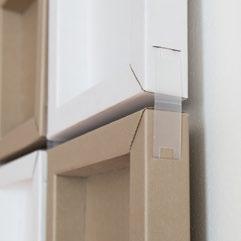

BOISERIE is the tridimensional model of WALLI, a wall covering made of recycled cardboard, that is ecologically sustainable, non-invasive and customizable. It provides a modern interpretation of the wall decorations of the 17th century in France.
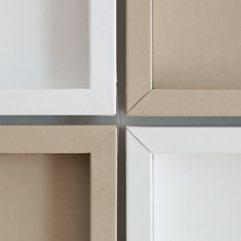

FURNITURE / COATING
ITALY / +39 3296835360 - www.wallidesign.it - sales@wallidesign.it
WALLI DESIGN BOISERIE
194
Ph.
Silvia Borroni, Civitanova Marche - www.silviaborroni.it
Composto da sei parti, è un tavolo pronto al montaggio progettato per le case moderne. Le gambe possono essere rimosse facilmente e conservate all’interno del tavolo in maniera comoda e compatta. Six Table è reversibile e configurabile in base alle esigenze del momento.
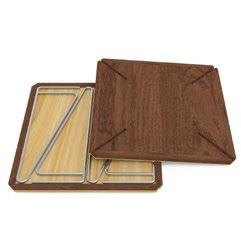

Composed of six parts, Six Table is a ready-to-assemble (RTA) table designed for modern homes. The legs can be easily removed and be stored inside the tabletops for compact and convenient storage. It is reversible to be configured according to user preference.


FURNITURE / TABLE
SIX TABLE USA / +1 8589001535 - www.jeeyoungyang.com - jeeyoungyang.design@gmail.com 195
Jeeyoung Yang
ZATOO DESIGNSTUDIO / Zappettini Martina - Tunesi Valerio
Foglia curvata e torta sì da creare una doppia sorgente luminosa: luce diffusa verso l’alto e concentrata verso il basso. Il supporto è un nastro metallico che funziona come una fibbia svincolata dal corpo luminoso plastico, utilizzabile così in più modi, appoggiato o sospeso.

A curved leaf so as to create a double light source: the light is diffused upwards and concentrated downwards. The support is a metal band that acts as a buckle released from the plastic luminous body, to be used in various ways, on a surface or suspended.
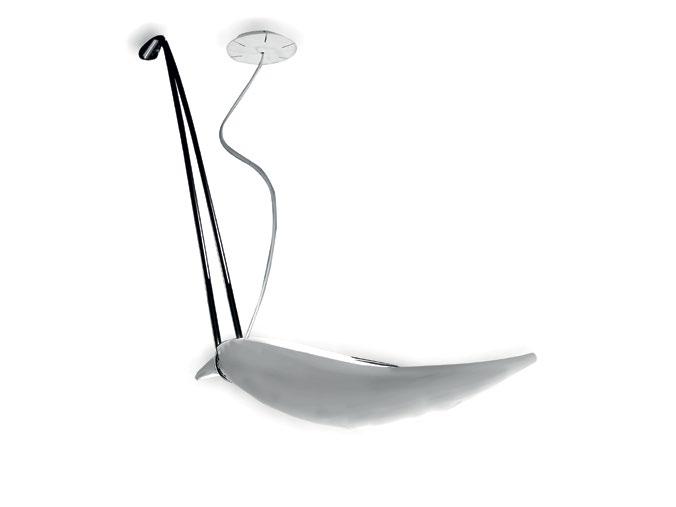
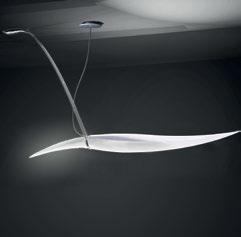

FURNITURE / LIGHTING
PHYLLIS ITALY / +39 3280380034, +39 3487400690 - www.zatoodesign.com - zatoodesignstudio@gmail.com 198
Coat Check Chair aiuta a trovare significati inattesi negli oggetti comuni. Ricombinando appendiabiti e un’asta in acciaio, coinvolge manufatti ordinari risolvendo problemi comuni: cosa fare con le grucce che intasano l’armadio e come incoraggiare le persone ad appendere i vestiti.
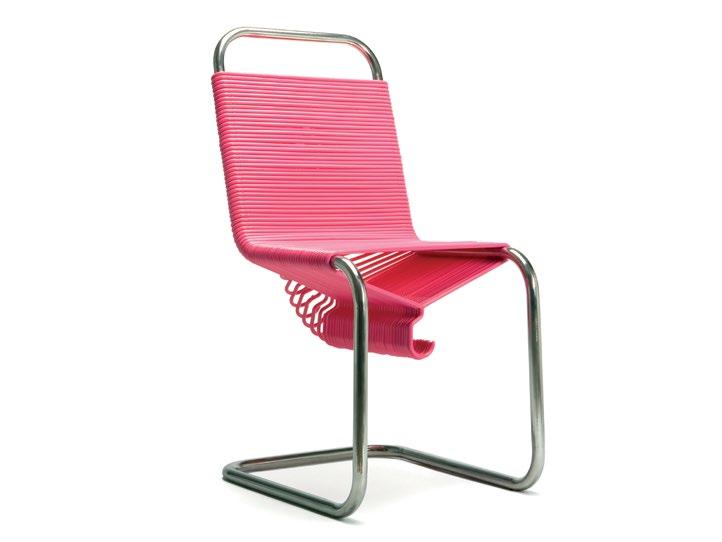


It helps users find unexpected meaning in mundane objects. Recombining clothes hangers and a steel closet rod, it engages pedestrian artifacts to solve common problems: what to do with extra hangers clogging up a closet, and how to encourage people to hang up their clothes.

FURNITURE / CHAIR
COAT CHECK CHAIR USA / +1 5188103471 - www.behance.net/joeyzeledon - joey.zeledon@gmail.com 199
Joey Zeledón
Nata dal binomio legno e bicicletta WooBi è la bicicletta da città per chi vuole passeggiare nella quotidianità. Il suo design minimal riporta alla tradizione mentre la ricerca di nuove forme estetiche e tecnologiche volge lo sguardo all’unicità e al futuro.


Born from the combination of wood and bike, WooBi is the city bike for those who want to walk in their everyday life. The minimal design takes back to tradition, while the search for new aesthetic and technological forms look to uniqueness and future.


/ BICYCLE
VEHICLE
WOOBI ITALY / +39 3476841188 - www.matteozugnoni.it - zugnoni.matteo@gmail.com Ph. Matteo Antonio Rapella 200
Matteo Zugnoni
Lampada da tavolo a LED composta dalla sovrapposizione di elementi che esaltano le forme e la naturalezza del materiale. Il design semplice unito a materiali e finiture laccato e naturale crea unici ed eleganti effetti di luce.
A LED table lamp made by overlapping elements that enhance the forms and the material naturalness. The simple design, combined with lacquered and natural materials and finishes, creates unique and elegant lighting effects.




FURNITURE / LIGHTING
OVELYING ITALY / +39 3476841188 - www.matteozugnoni.it - zugnoni.matteo@gmail.com 201
Matteo Zugnoni
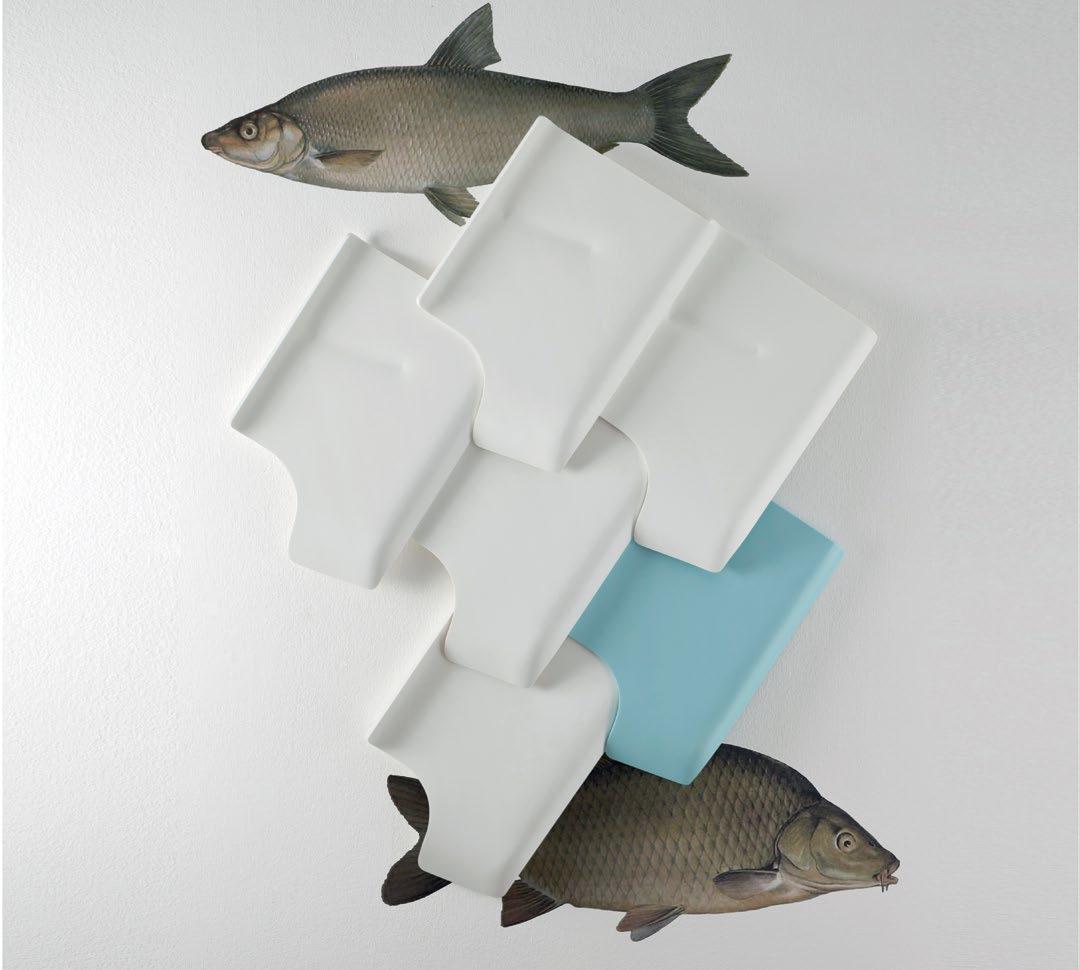
ODO FIORAVANTI
202
T-BONE / Odo Fioravanti for Andreoli-Du Pont - Ph. Emanuele Zamponi, Art: Paolo Giacomazzi
Odo Fioravanti si è laureato in Industrial Design presso la Facoltà del Design del Politecnico di Milano. Dal 1998 si occupa di industrial design, sperimentando anche la grafica e l’exhibition design, con la volontà di ricondurre le diverse discipline ad una materia continua. I suoi progetti hanno ricevuto premi prestigiosi a livello internazionale. È stato docente e lecturer presso numerose scuole e università come il Politecnico di Milano, lo IUAV di Treviso, l’Università di San Marino, l’Istituto Marangoni, la Scuola Politecnica di Design, la Domus Academy, HEAD Genève. I suoi lavori hanno fatto parte di diverse esposizioni internazionali, culminate nel 2010 con una mostra personale dal titolo “Industrious Design” presso il Design Museum della Triennale di Milano.
Nel 2011 ha vinto il Premio Compasso d’Oro ADI con la sedia in legno curvato Frida di Pedrali.
Svolge l’attività di pubblicista per riviste del settore design cercando di esplorare le nuove frontiere del progetto come disciplina. Nel 2006 ha fondato l’Odo Fioravanti Design Studio che ha sviluppato progetti per diverse aziende. Tra esse Abet Laminati, Ballarini, Casamania, COOP, Desalto, Flou, Fontana Arte, Foscarini, Land Rover, Normann Copenhagen, Olivetti, Palomar, Pedrali, Pircher, Toshiba, Vibram, Victorinox.
Odo Fioravanti studied Industrial Design at the Design Department of the Milan Polytechnic. Since 1998 he has worked as an industrial designer, also experimenting graphic and exhibition design, with a firm will to melt different design areas into a continuous matter. His projects received prestigious international design awards since he created Odo Fioravanti Design Studio. He taught and lectured in many design schools and academies: Milan Polytechnic, University of Venice, San Marino University, Istituto Marangoni, Domus Academy, HEAD Genève. His works have been featured in many International exhibitions. In 2010 the Design Museum of the Triennale di Milano featured the personal exhibition “Industrious Design” about his works.
He won in 2011 the Compasso d’Oro Prize ADI with the Frida wooden chair by Pedrali.
He also works as a freelance journalist for design magazines trying to explore and to change the boundaries of design as a discipline. Since 2006 he ran the Odo Fioravanti Design Studio, developing projects for many companies. Notably Abet Laminati, Ballarini, Casamania, COOP, Desalto, Flou, Fontana Arte, Foscarini, Land Rover, Normann Copenhagen, Olivetti, Palomar, Pedrali, Pircher, Toshiba, Vibram, Victorinox.
Designer Profile 203


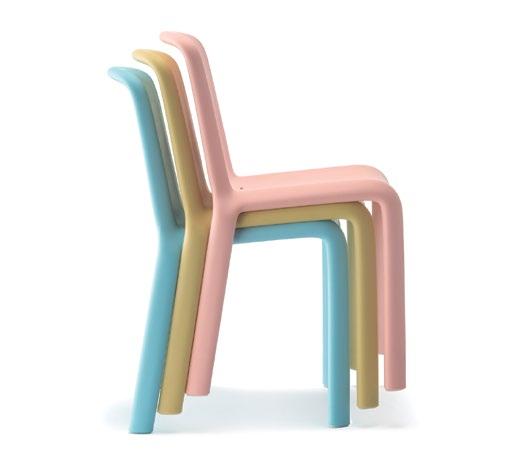
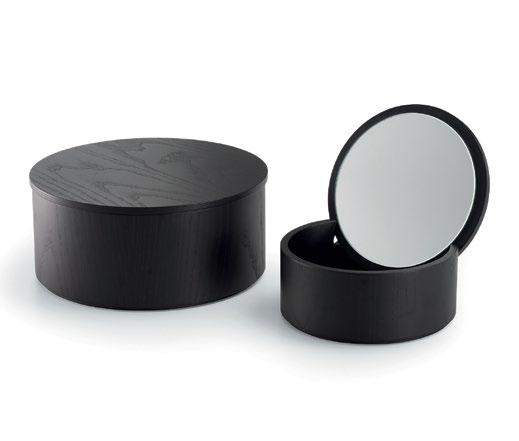 DOME / Odo Fioravanti for Pedrali - Ph. Leo Torri
NELLO / Odo Fioravanti for Palomar - Ph. Pierluigi Anselmi
PSICHE / Odo Fioravanti for Flou
DOME / Odo Fioravanti for Pedrali - Ph. Leo Torri
NELLO / Odo Fioravanti for Palomar - Ph. Pierluigi Anselmi
PSICHE / Odo Fioravanti for Flou
204
SNOW / Odo Fioravanti for Pedrali
Qual è stato il primo contatto con un’azienda importante? Ci sono particolari ricordi, aneddotti e sensazioni che vuoi raccontare?
Si tratta dell’incontro con Pedrali a cui ero arrivato con difficoltà con la voglia di mostrargli quella che poi sarebbe diventata la sedia Snow. Siccome a quei tempi non avevo uno studio vero e proprio ero pieno di paure e pensavo che avrei dovuto dare l’idea di essere un designer in carriera con uno stuolo di assistenti, allora chiesi a due miei amici di far finta di lavorare per me. La sera prima facemmo un po’ di prove per capire come muoverci una volta lì. Questa specie di messa in scena in realtà funzionò e riuscii a convincere l’azienda a produrre la sedia. Rimane un bel ricordo di una gita con due cari amici e tante risate assieme!
Ci sono stati personaggi fondamentali che hanno contribuito allo sviluppo della tua carriera?
Ci sono stati tanti incontri belli dallo storico Alberto Bassi che mi ha fatto lavorare per primo. Poi Massimo Randone e Biba Acquati che mi fecero fare i primi lavori da progettista. Gli amici Giulio Iacchetti e Matteo Ragni con cui ho condiviso e condivido tante esperienze importanti. Dodo Gualzetti che mi ha insegnato un sacco di cose sulla grafica e l’allestimento. Poi Marc Sadler, Richard Sapper. Ma soprattutto la mia compagna Chiara, anche se suona retorico, che è sempre la persona con cui approfondisco i pensieri che stanno dietro a tutti i progetti.
Quale consiglio daresti ai giovani designer che vogliono emergere?
Fate prototipi, misuratevi con la parte materiale del progetto. Siate furbi e attenti. Studiate i mercati o gli ambiti che vi interessano e capitene le criticità e
Which was your first contact with a major company?
Are there any special memories, anecdotes or feelings you would like to tell?
It was the meeting with Pedrali. I had some difficulties to reach him and I wanted to show him what was to become the Snow chair. As in those days I did not have a real studio, I was full of fears and I believed I would have to give the idea I was a career designer with a crowd of assistants. So I asked a couple of friends to pretend they were working for me. The night before we made some tests to figure out how to behave once we were there. This setup actually worked and I succeeded in convincing the company to manufacture the chair. It is still a pleasant memory of a trip with two dear friends and so much laughing together.
Are there any key people who contributed to your career development?
There were so many beautiful meetings, starting from Alberto Bassi, who was the first to give me the opportunity to work. Then Massimo Randone and Biba Acquati, with whom I first worked as a designer. My friends Giulio Iacchetti and Matteo Ragni, with whom I shared and am still sharing numerous important experiences. Dodo Gualzetti, who taught me a lot of things about graphics and exhibit. Then Marc Sadler, Richard Sapper. But above all, my partner Chiara. Although it seems rhetoric, she always is the one with whom I explore the thoughts that are behind all my projects. What advice would you give to young designers who want to emerge?
Make prototypes, measure up with the material aspect of the project. Be smart and careful. Study the markets and the areas you are interested in,
Interview 205

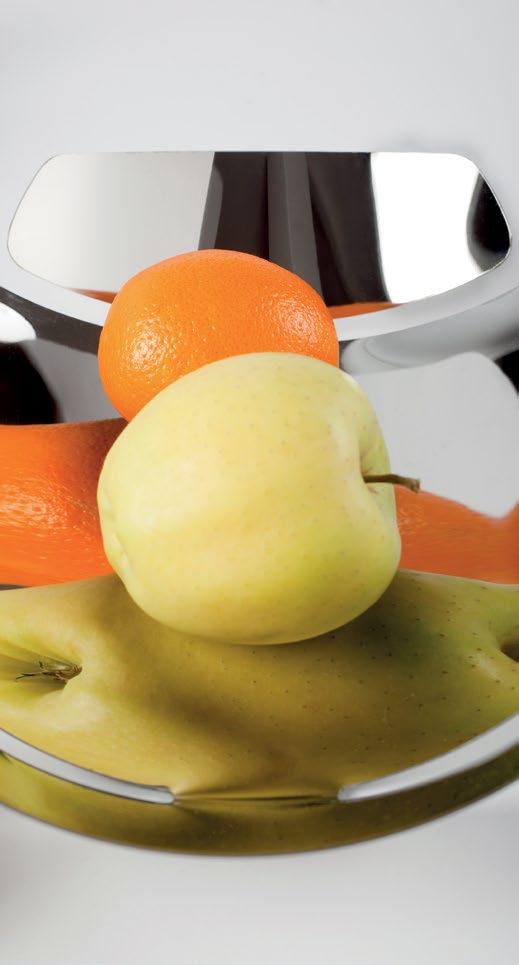 CALANDRA / Odo Fioravanti for Mesa - Ph. Emanuele Zamponi
CALANDRA / Odo Fioravanti for Mesa - Ph. Emanuele Zamponi
206
FREERIDE / Odo Fioravanti for Land Rover
le opportunità. Buttatevi, perché imparare a ballare è una cosa che si fa ballando.
Qual è secondo te il modo corretto di progettare rivolgendo uno sguardo al futuro?
Bisogna spingere verso il futuro ed esplorare forme e modi inusitati. Elaborare linguaggi che indichino il futuro e non riecheggino il passato, come peraltro va di moda adesso. Se apro le riviste rivedo i mobili di mia nonna – belli, sì – ma non so se volevo arrivare al 2017 per vedere questo. Forse preferivo lo skateboard a levitazione antigravitazionale. Ecco pensare alla forma del futuro è un impegno gravoso e doloroso ma aggirarlo imitando stili desueti è un gesto vile verso l’umanità.
Quali sono le principali differenze nell’approccio alla progettazione tra un designer italiano e uno straniero?
Credo storicamente la differenza fosse nel pensiero che c’era dietro. Una specie di approccio umanisticoculturale che all’estero praticamente non c’era. Negli ultimi anni però questo tipo di approccio si è diffuso anche all’estero e forse oggi è più presente all’estero che in Italia. Questo sicuramente sta livellando gli approcci, anche se per me qui ci rimane ancora una scintilla in più.
and try to understand their critical elements and opportunities. Be brave, because if you want to learn to dance, you have to dance.
Which is the proper way to design with a look to the future, in your opinion?
One must look at the future and explore unusual forms and ways. Develop languages that indicate the future and do not echo the past, as it seems fashionable now. When I browse through the magazines, I see my grandmother’s furniture again – indeed beautiful – but I am not sure I wanted to get to 2017 to see all that. I’d rather have the antigravitational levitation skateboard. Thinking about the future form is a huge and painful undertaking, but bypassing it and imitate outdated styles is a coward attitude towards humanity. What are the main differences in the approach to design between an Italian and a foreign designer?
I think that once the difference was in the thought behind. A kind of humanistic and cultural approach that did not virtually exist abroad. However in recent years this type of approach spread also abroad and maybe today is more present there than in Italy. This is surely going to level the approaches, even if I think that here we still have one more sparkle.
ODO FIORAVANTI Italy www.fioravanti.eu 207
www.promotedesign.it
D esi g n Fo r 2017 è la se st a e d i z ion e d i un p ro ge t t o c h e so t t ol i n e a l’e s ig enza , an c h e nel l’ e r a de lla re t e , d i una f or t e ma t r i c e c ultu r a l e a r i c o rda re ch e la mo de rni t à v iag gi a v e l o c e m e n t e p o r t andos i c on s é un b a g agl i o pi e no di s t o r ia e d i t r ad i z i oni. Un a v ali g ia s t r a c olma d i es pe ri e nz e, qu e l l e d e i g r an d i ma e s tri c h e sem p re i nflu e n z ano e c on t aminano l e p uls i oni de lla nu ov a l ev a c re a ti v a. La nu tr i t a c ommuni t y “so c ial or ie n t e d ” d i P romo t e de s i gn. i t t ro v a an c o r a una v ol t a uno s p azio f i s i c o , f a c e n d o un bal z o fuo r i d alla re t e p e r p opola re l e p ag i n e di una r i cc a e v a ri e g a t a r a c c ol t a di p ro t o ti p i e nu o v i p rog e t ti i n c e rc a d i p ro d ut t o re
De s ig n Fo r 2017 i s t h e s i x t h ed i t ion of a p r oj e ct t hat , e v en i n the In t e r n e t a g e , e mphas i z e s t h e n e e d of a s t r on g c ul t u r al ma t rix t o r e m e mber that mod er n i t y t r a v e l s r a pid l y an d br in g s w it h it a b a gg a ge full of hi st o r y an d t r adi t ions. A sui t c as e b ul gi n g w i th e x peri en c e s, t hos e of t h e g r e a t ma s t e r s, who a l ways af f e ct an d c on t amina t e th e i mpulses of t h e n e w c r e a ti v e ge n e r ations. Th e la r ge “soc i al o ri en t e d” c ommun ity o f P r omo t ede si g n. it f i n d s on c e a g ain a phys i c al s p a c e , ma k in g a l e ap ou t of the n e t w or k t o po p ula t e t h e p a ge s of a r ic h an d v a r i e d c ol l e c t i on of p r o t o t yp e s an d n e w p r o j e ct s t ha t a r e l oo k in g f o r a manu f a ct u r e r

SPE CIAL CONT E NT S
Al i as, Kri st al i a, M o roso - Lo re nzo Dam i ani , A l e s san d ro D ub i n i, O d o Fio r a v ant i
9 78886 8 7 4 158 7 40,0 0
















































 LALEGGERA / Riccardo Blumer
LALEGGERA / Riccardo Blumer

 HIGHFRAME / Alberto Meda
HIGHFRAME / Alberto Meda



































































 SHARKY STOOL / Neuland. Paster & Geldmacher
SHARKY STOOL / Neuland. Paster & Geldmacher




































 DIATOM / Ross Lovegrove
GEMMA / Daniel Libeskind
DIATOM / Ross Lovegrove
GEMMA / Daniel Libeskind



 HUSK / Marc Thorpe
SHADOWY / Tord Boontje
TOUTI / Patricia Urquiola
HUSK / Marc Thorpe
SHADOWY / Tord Boontje
TOUTI / Patricia Urquiola























 Dario Marfella
Dario Marfella




















 SGABELLO / Lorenzo Damiani for Pusterla Marmi - Ph. Andrea Basile
SEDUTA BENNA / Lorenzo Damiani for Da a
SGABELLO / Lorenzo Damiani for Pusterla Marmi - Ph. Andrea Basile
SEDUTA BENNA / Lorenzo Damiani for Da a















 Alessandra Pennino
Alessandra Pennino




























 MAGISTRA / Alessandro Dubini for i4Mariani
DIAMOND / Alessandro Dubini for Iqonik
MAGISTRA / Alessandro Dubini for i4Mariani
DIAMOND / Alessandro Dubini for Iqonik







 Arianna Sbaffi
Arianna Sbaffi




















































 DOME / Odo Fioravanti for Pedrali - Ph. Leo Torri
NELLO / Odo Fioravanti for Palomar - Ph. Pierluigi Anselmi
PSICHE / Odo Fioravanti for Flou
DOME / Odo Fioravanti for Pedrali - Ph. Leo Torri
NELLO / Odo Fioravanti for Palomar - Ph. Pierluigi Anselmi
PSICHE / Odo Fioravanti for Flou

 CALANDRA / Odo Fioravanti for Mesa - Ph. Emanuele Zamponi
CALANDRA / Odo Fioravanti for Mesa - Ph. Emanuele Zamponi
